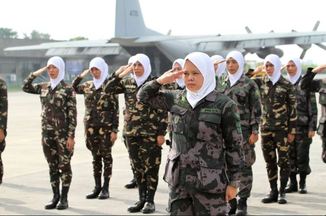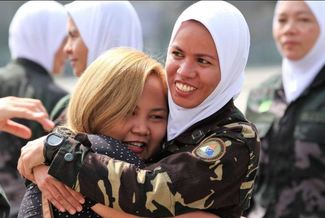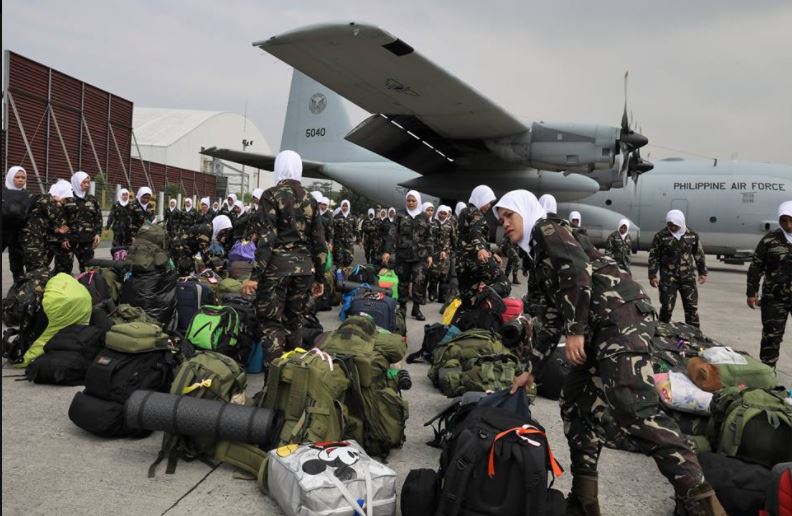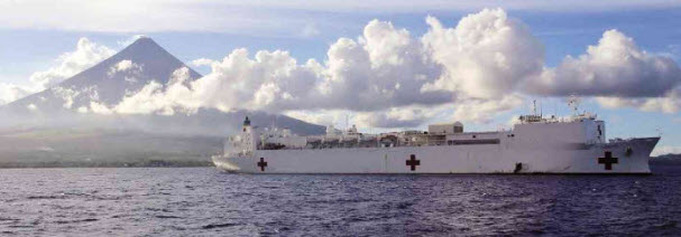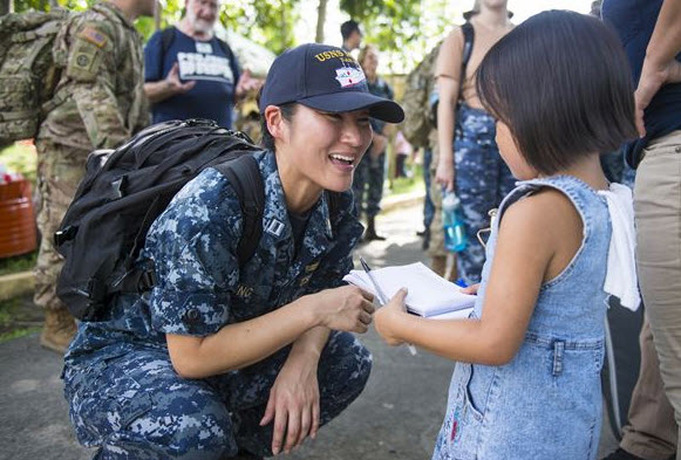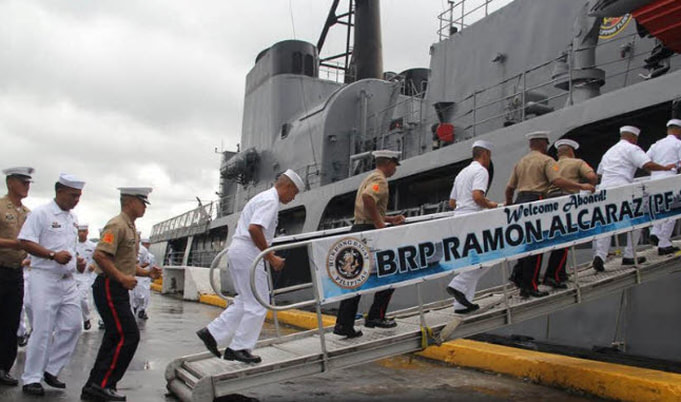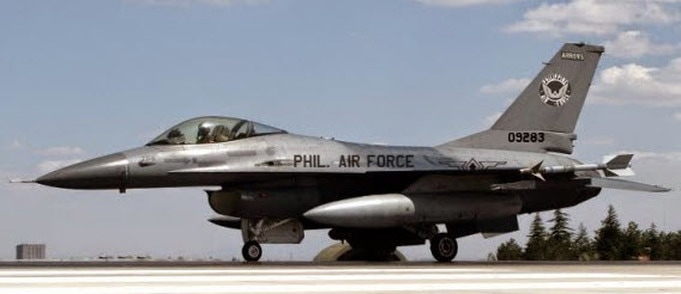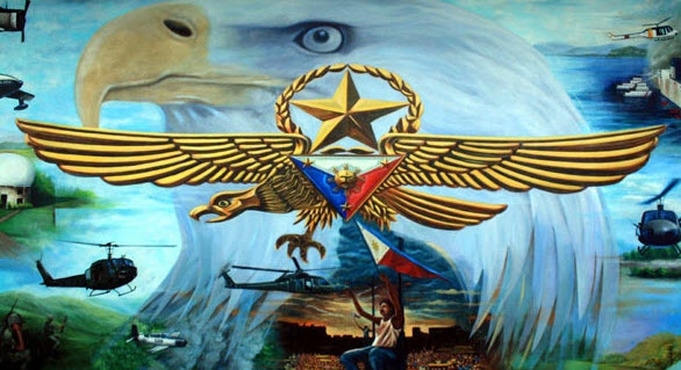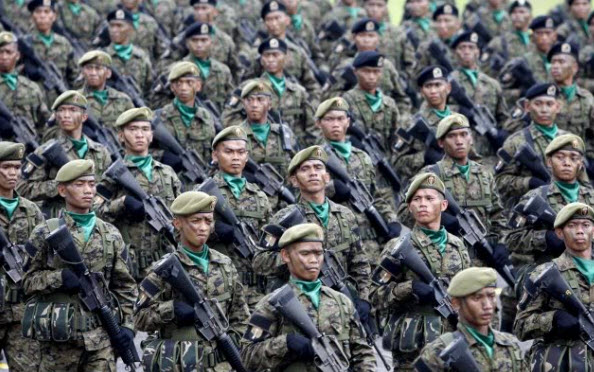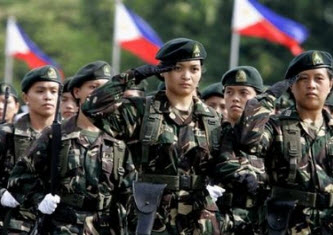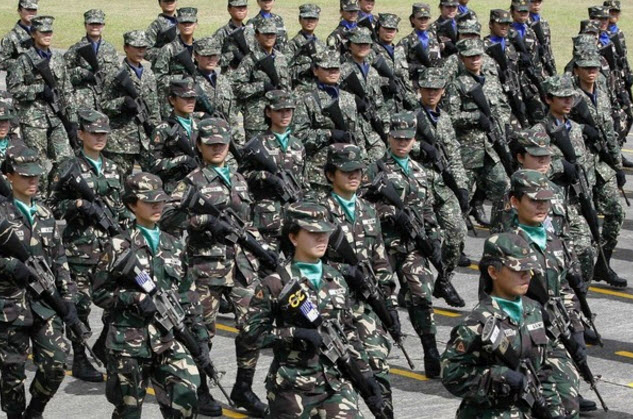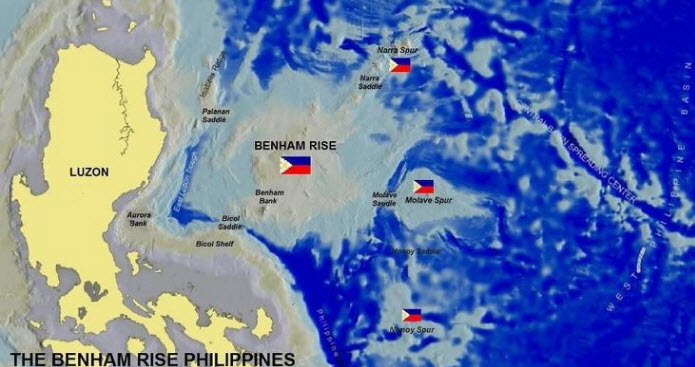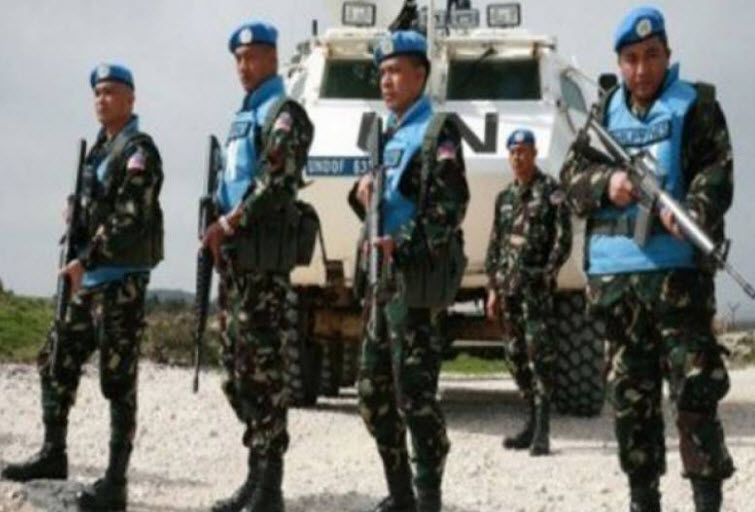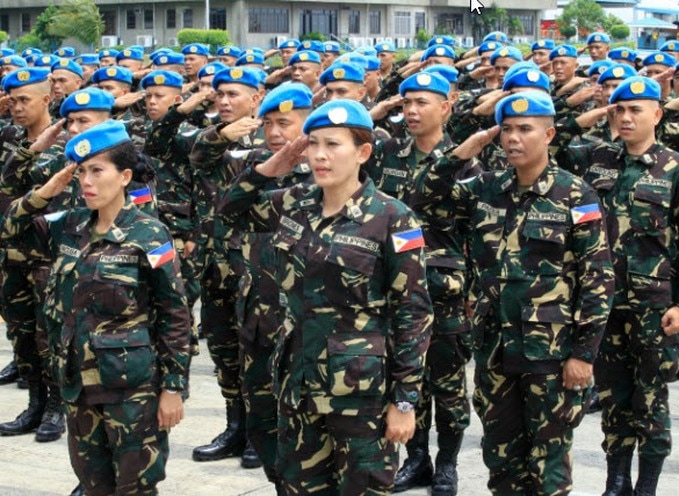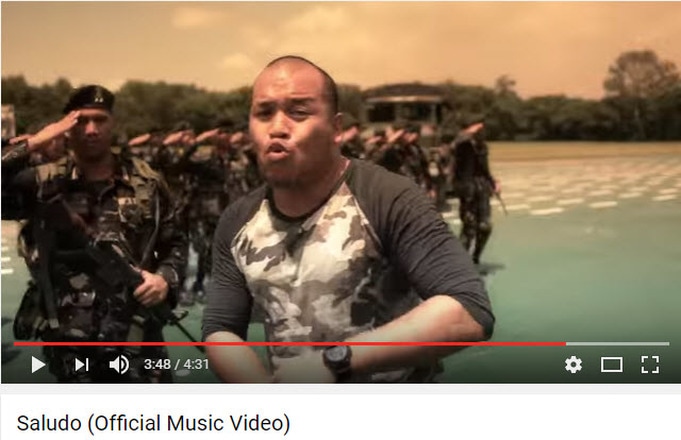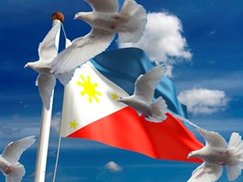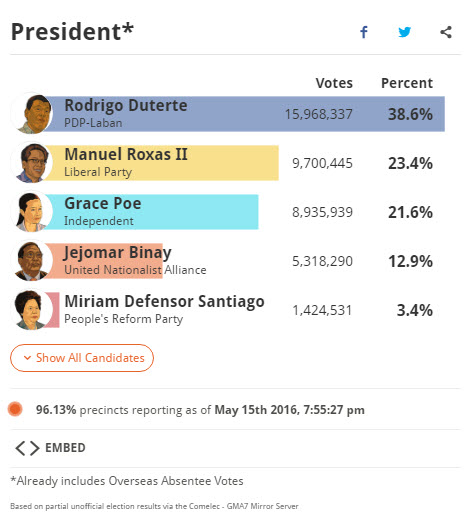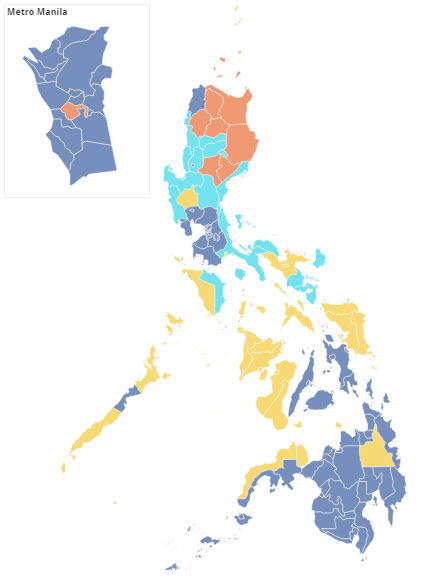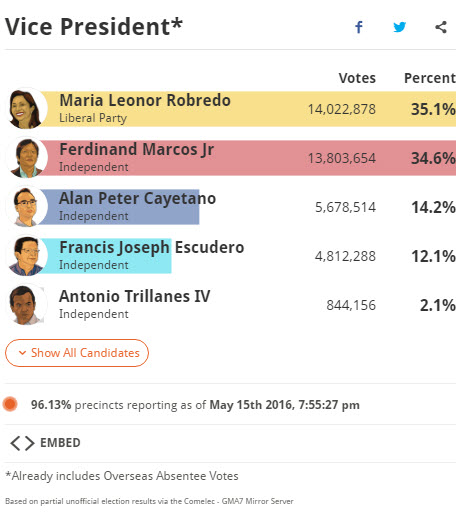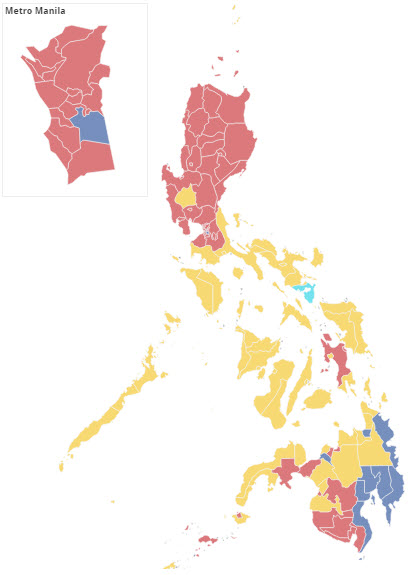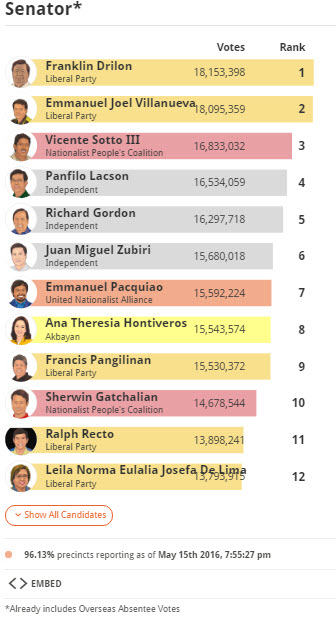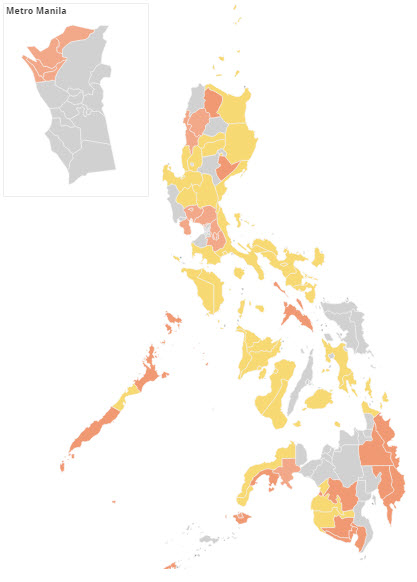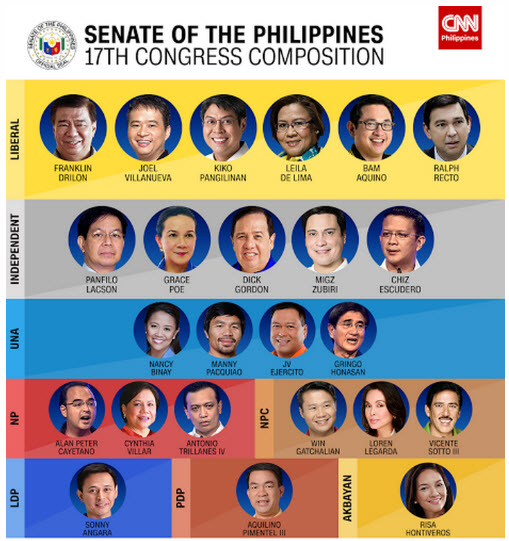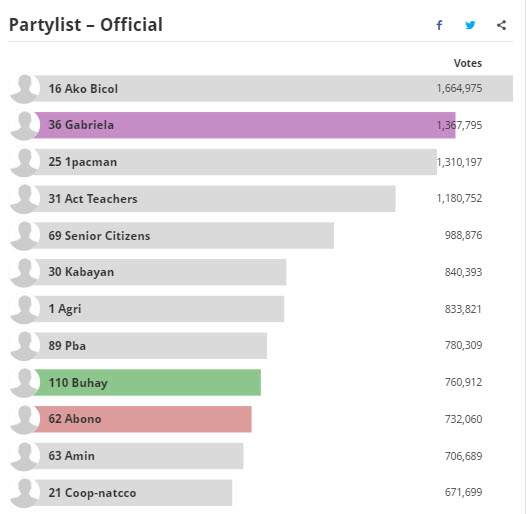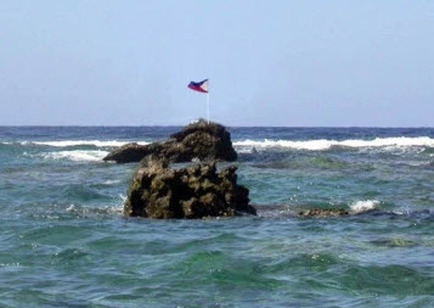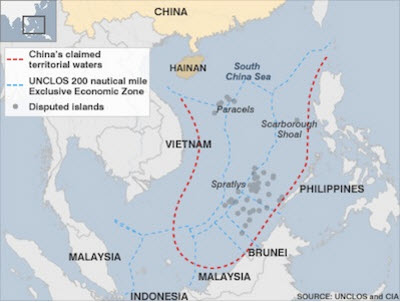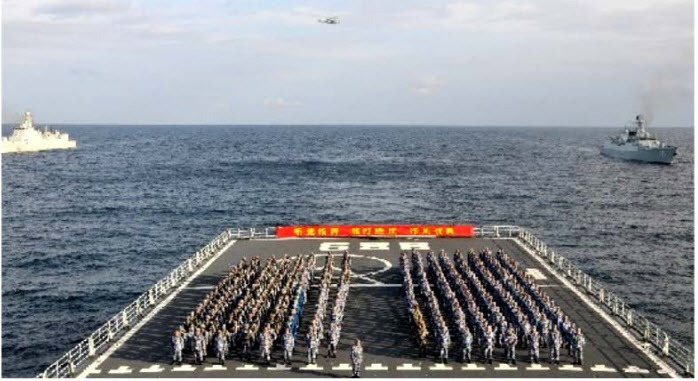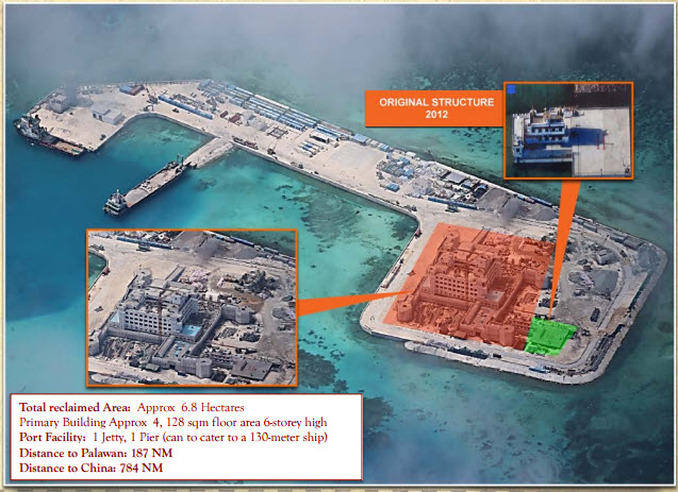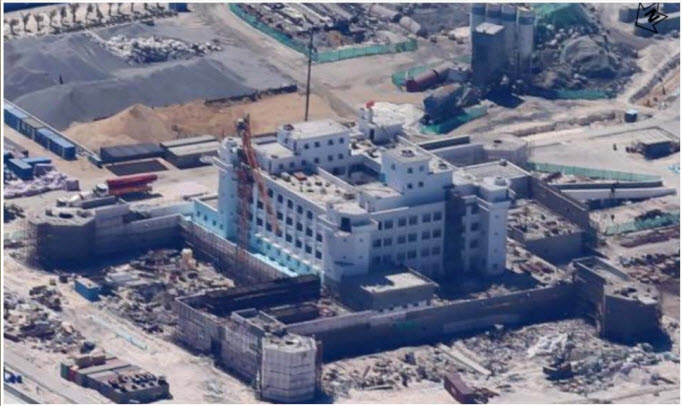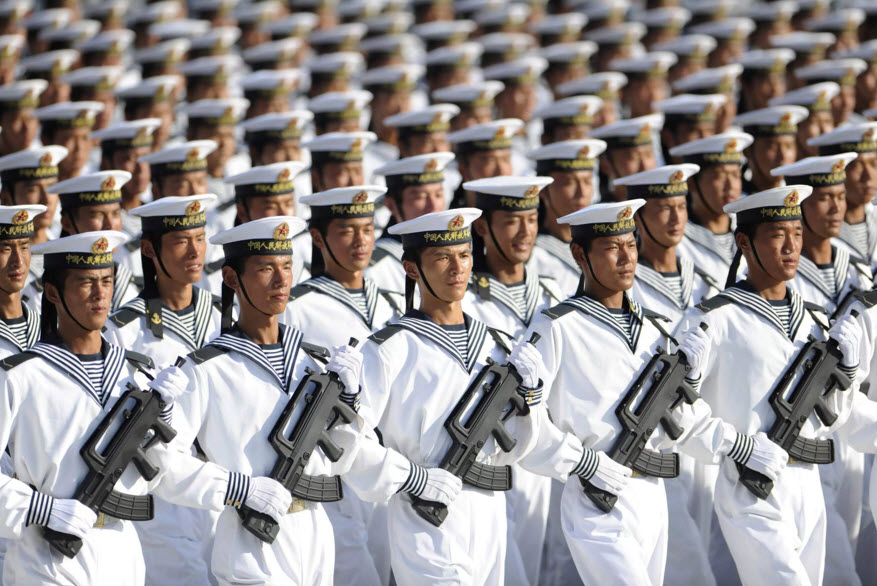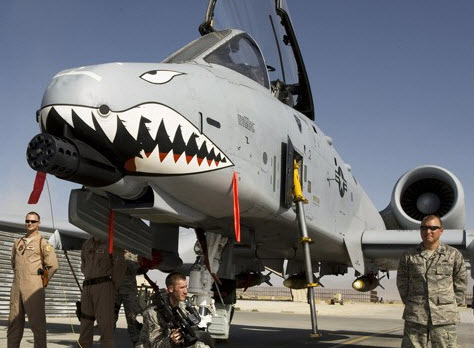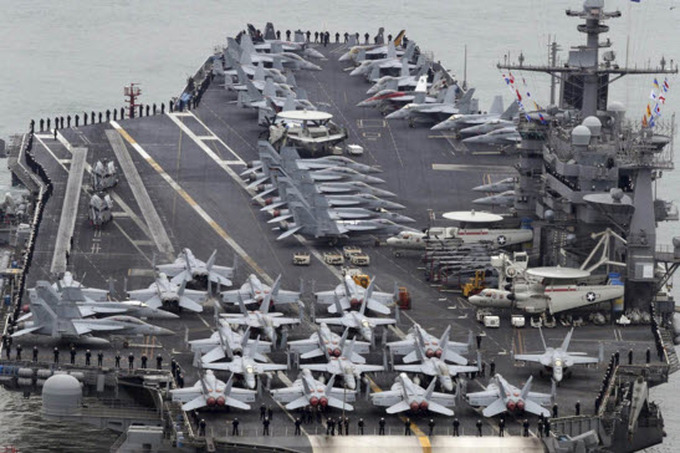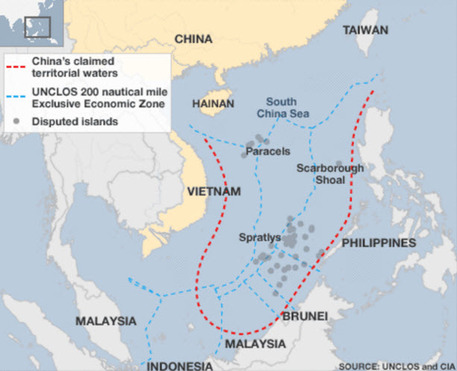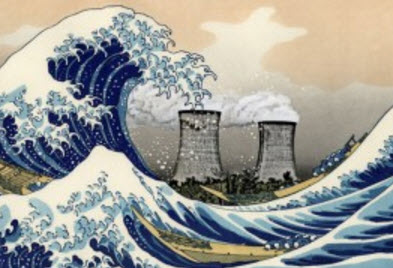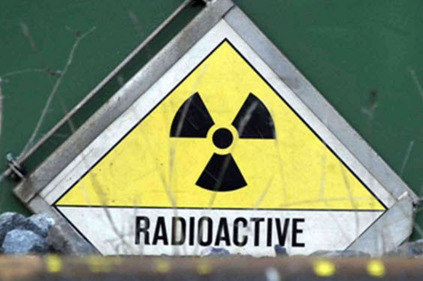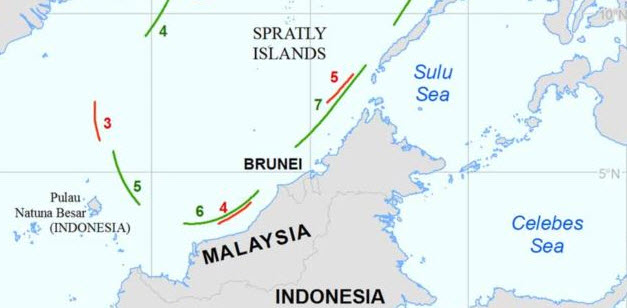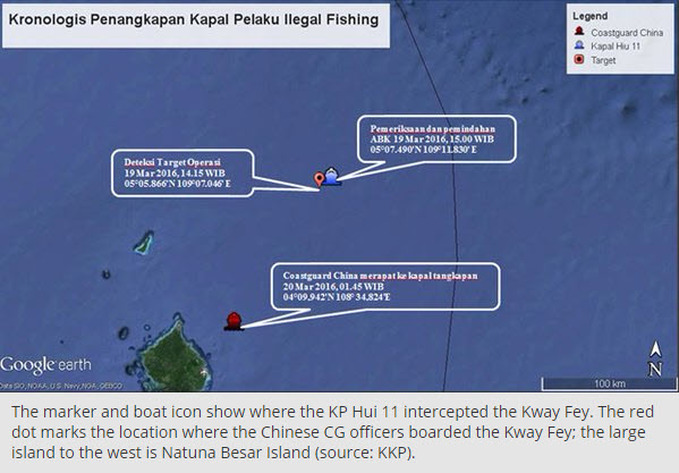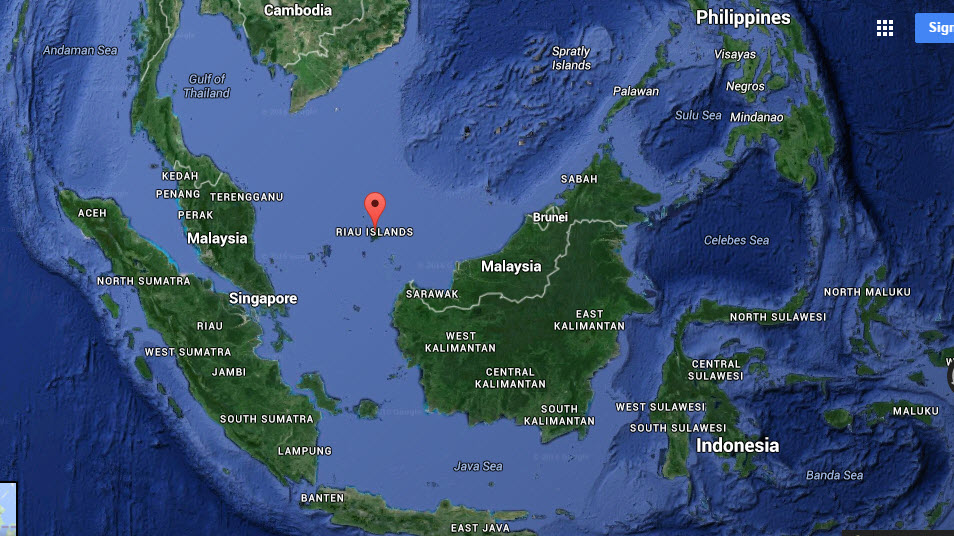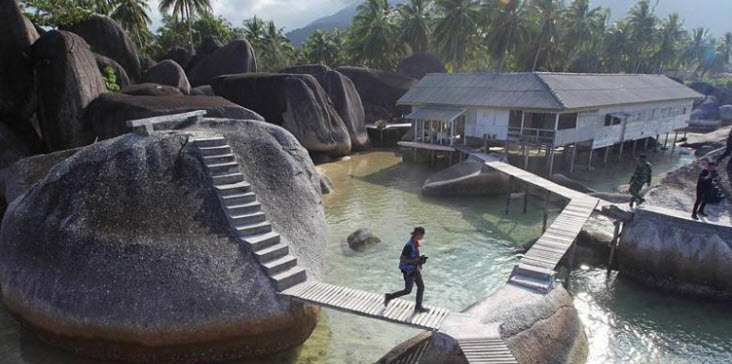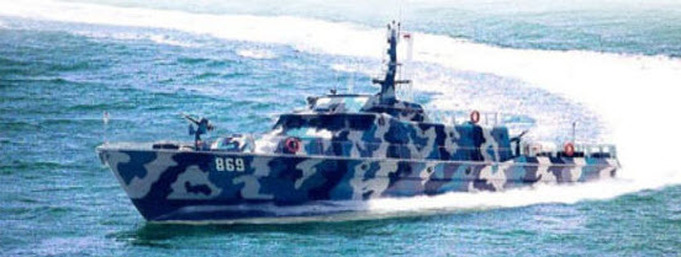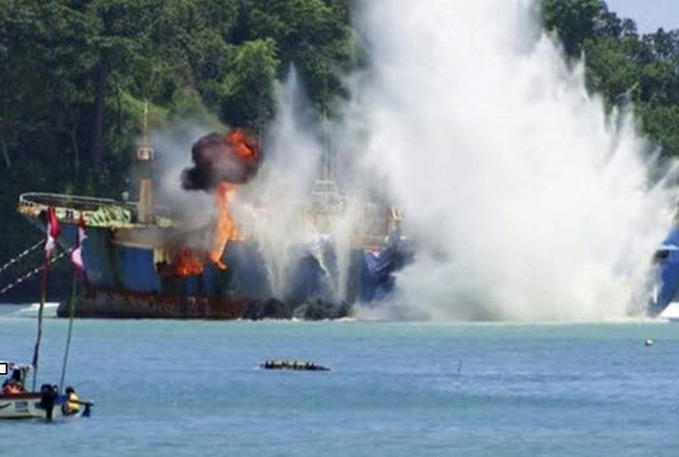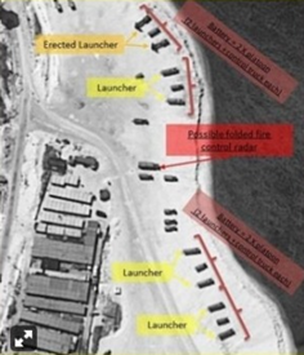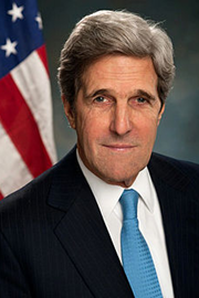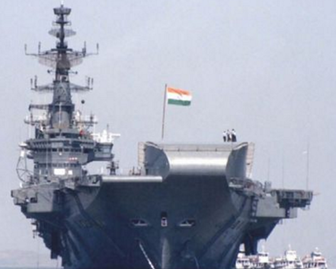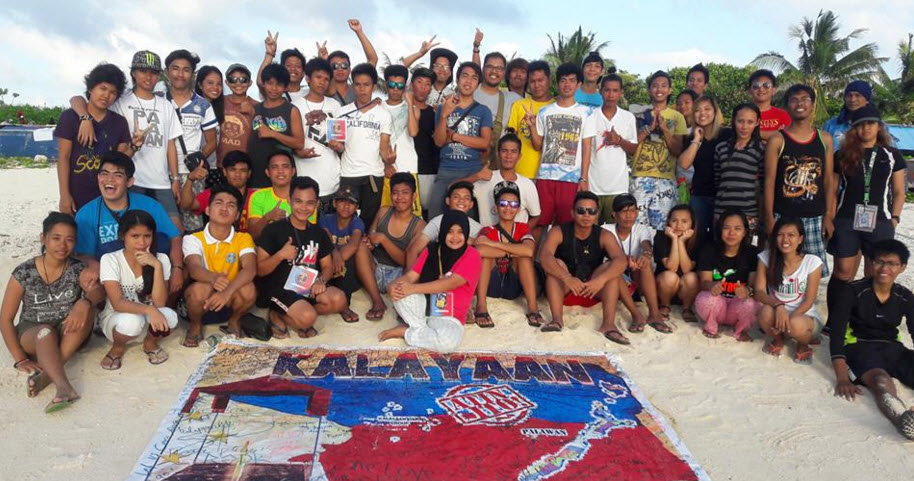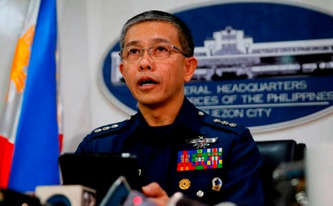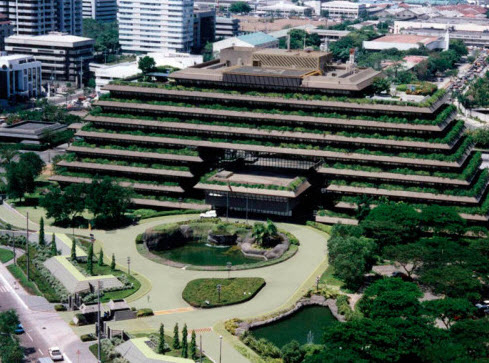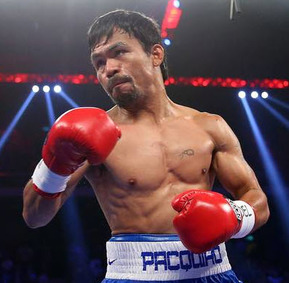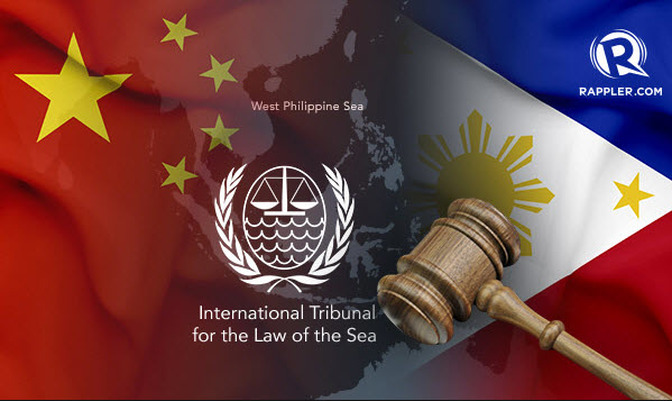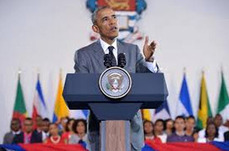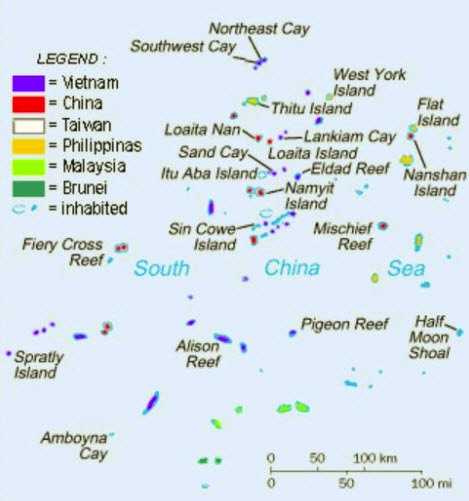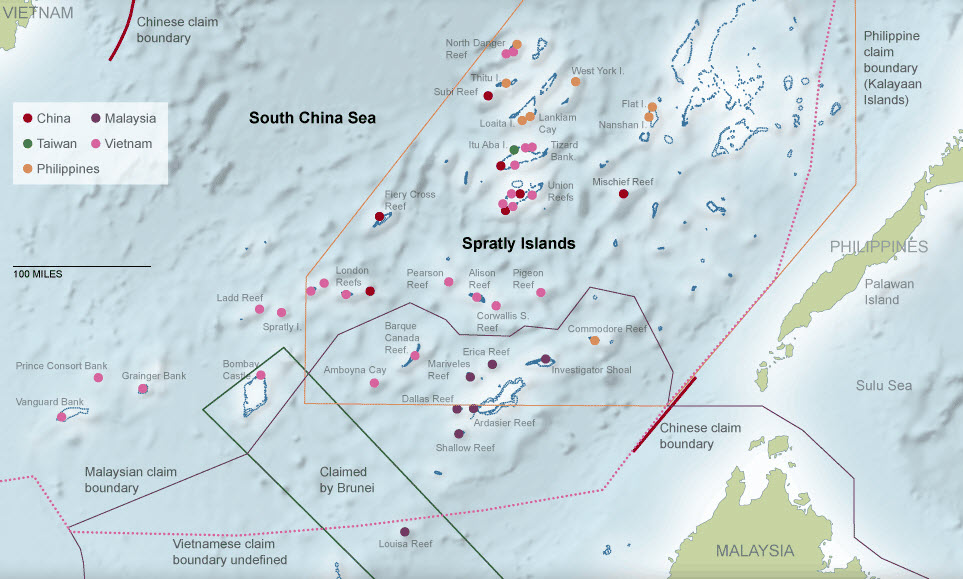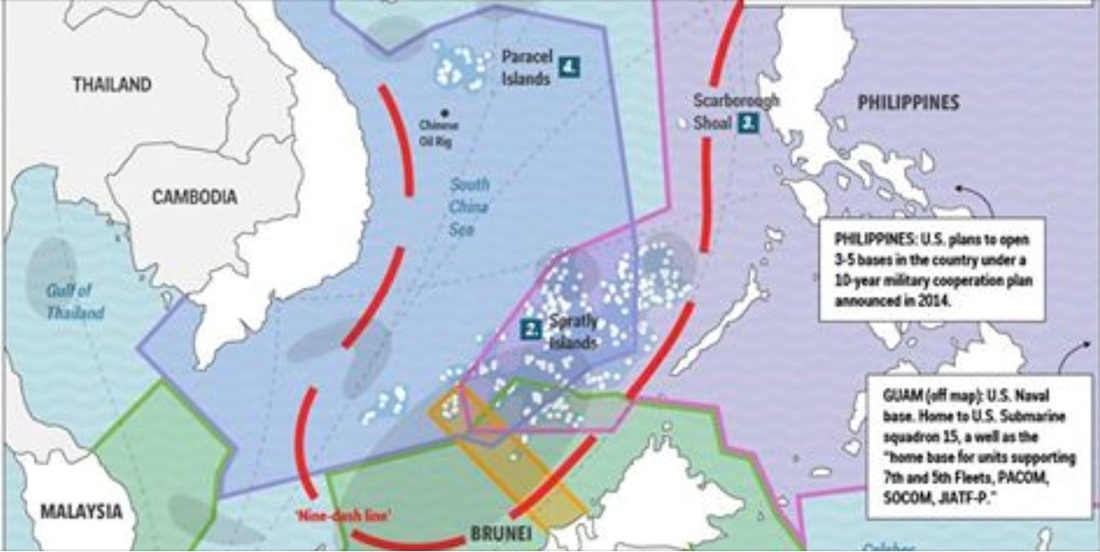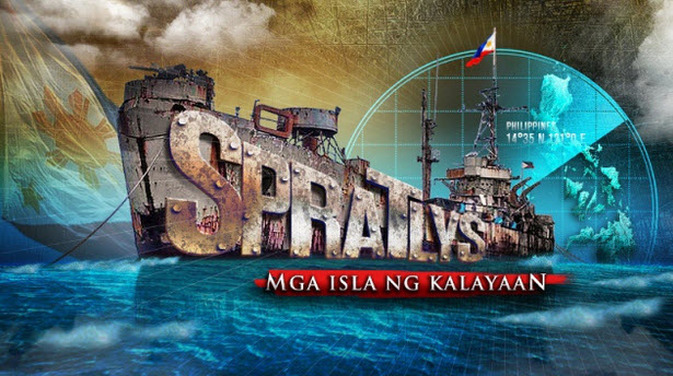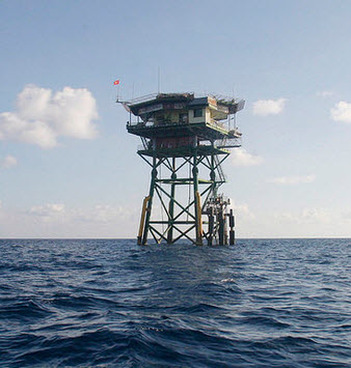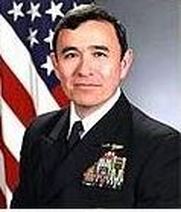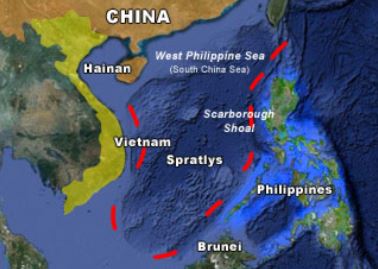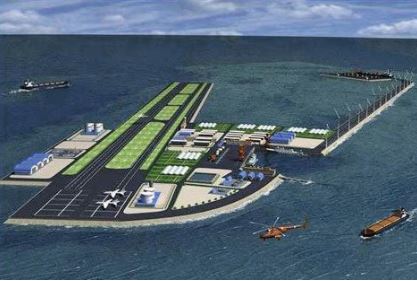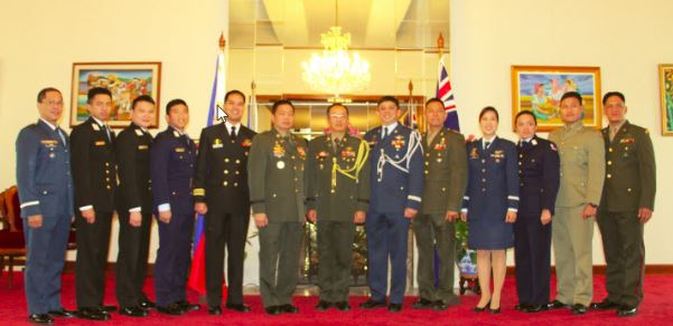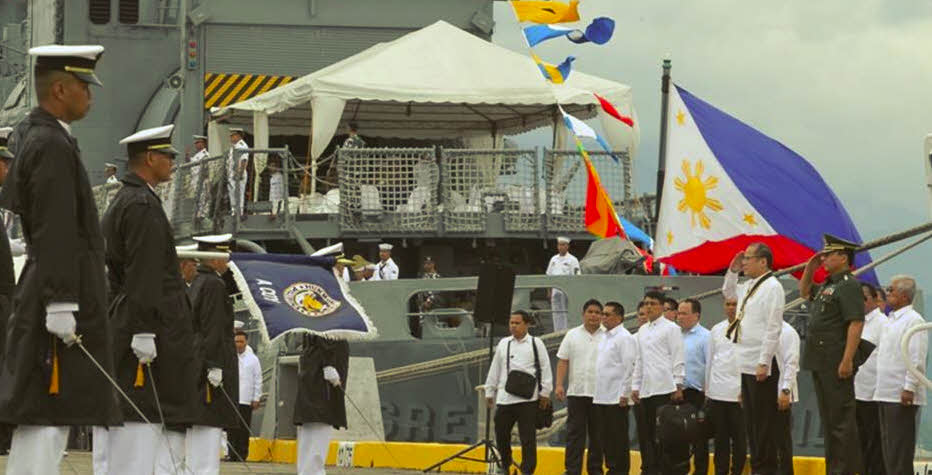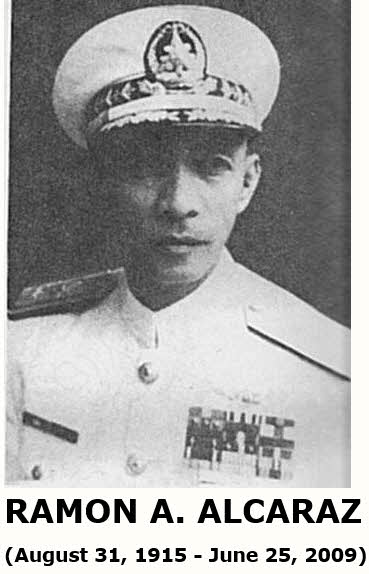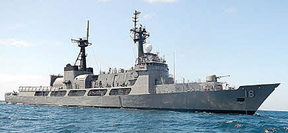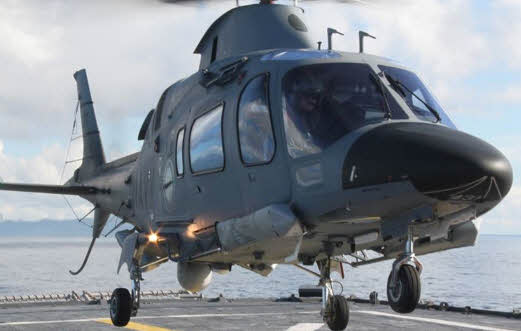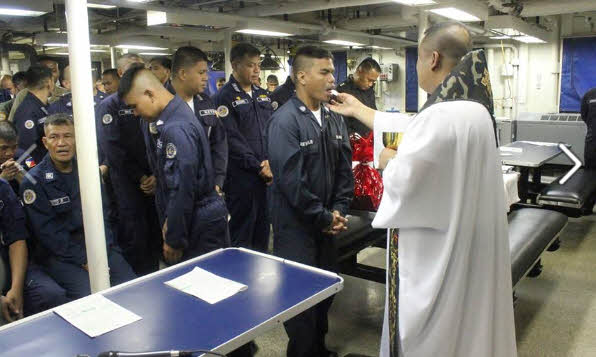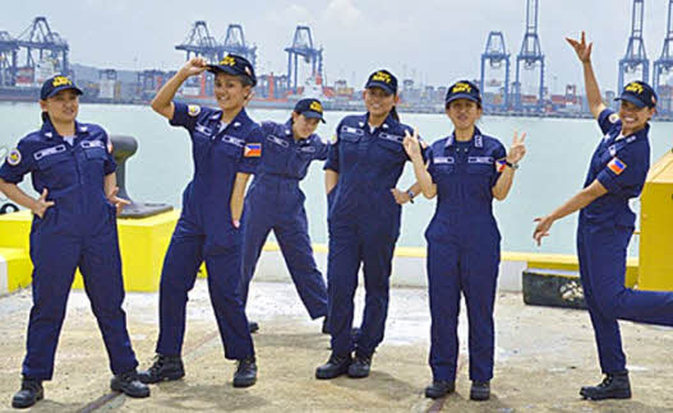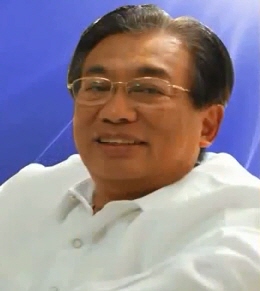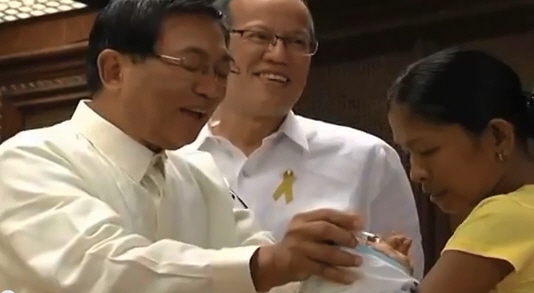Philippine Media & News
--------------------------------------------------------
Hijab-clad Philippine military and police women deployed to
Lanao del Sur Province as the Battle of Marawi City is
said to be in its final stages. (September 2017)
Within the last week a force of 100 military and police personel have been deployed to Marawi city.
This all female hijab wearing contingent of troops will help with the ongoing rehabilitation and reconstruction efforts in Marawi City and the...
Read and see more...
This all female hijab wearing contingent of troops will help with the ongoing rehabilitation and reconstruction efforts in Marawi City and the...
Read and see more...
-------------------------------------------------------------
World's Largest Hospital Ship Serves the Residents of
Legazpi, Bicol, in the shadow of the
World's Most Perfect Cone-Shaped Active Volcano. (July 2016)
The US Navy recently gave the residents of Legazpi city a real treat. The USNS Mercy, the World's biggest hospital ship, which was formally a supertanker, stopped in Legazpi last week and took many local Filipinos on board to treat them for various sicknesses for free. This could be described as a Floating Medicare System.
Photo: A US Navy dentist talks to a young Filipino student in Ligao City, in the foothills of the active Volcano, Mt Mayon (which means beautiful in the local Bicol dialect).
This is in addition to the normal hospital service which is available, but often very stretched in regard to demands on its limited resources by a large surrounding population. Even in Australia the hospitals are at times stretched for resources, in regard to demand for its services. One of the biggest issues in the Australian election last week was the federal health benefits system called Medicare. If the USNS Mercy also visited Sydney and gave free Medicare to Australian residents as well who knows if that would have affected the very tight election result?
Thanks to RFA's friends in Sydney, from whom RFA has a large following, for enthusiastically forwarding this article to RFA.
This is in addition to the normal hospital service which is available, but often very stretched in regard to demands on its limited resources by a large surrounding population. Even in Australia the hospitals are at times stretched for resources, in regard to demand for its services. One of the biggest issues in the Australian election last week was the federal health benefits system called Medicare. If the USNS Mercy also visited Sydney and gave free Medicare to Australian residents as well who knows if that would have affected the very tight election result?
Thanks to RFA's friends in Sydney, from whom RFA has a large following, for enthusiastically forwarding this article to RFA.
------------------------------------------------------------
Modernisation of the Philippine Military Continues to Gain Speed as Philippines Deploys a Naval Flotilla to Benham Rise on the
Northeast Pacific Coast of Luzon (May 2017)
Modernization
The Philippine Army, Navy and Air Force have been modernising in the first part of the 21st century in an effort to better protect its national borders and marine resources in the West Philippine Sea (also referred to as the South China Sea), Sulu Sea stretching to Malaysia in the South West, Celebes Sea stretching to Indonesia in the south, and its Pacific Ocean east coast.
A few years ago it boosted its naval abilities with new frigates, such as the BRP (Barko ng Republika ng Pilipinas" - Ship of the Republic of the Philippines) Ramon Alcaraz which has visited Darwin, Australia, for international military exercises since its commissioning.
The Philippine Army, Navy and Air Force have been modernising in the first part of the 21st century in an effort to better protect its national borders and marine resources in the West Philippine Sea (also referred to as the South China Sea), Sulu Sea stretching to Malaysia in the South West, Celebes Sea stretching to Indonesia in the south, and its Pacific Ocean east coast.
A few years ago it boosted its naval abilities with new frigates, such as the BRP (Barko ng Republika ng Pilipinas" - Ship of the Republic of the Philippines) Ramon Alcaraz which has visited Darwin, Australia, for international military exercises since its commissioning.
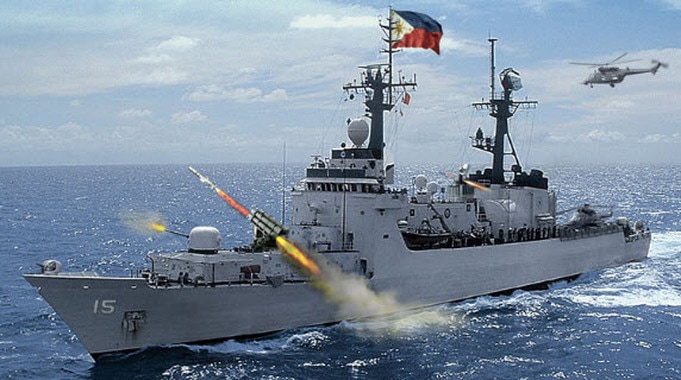
To complement and support its upgraded naval power, the Philippines has received additional supersonic fighter jets in 2017 bringing its current total to 6. This will soon increase to a squadron of 12. The FA-50 Fighter Jet made by regional friend South Korea, is very capable and comes at a reasonable cost. This is just one example of how the Philippines is engaging with its regional friends and allies to boost its military to protect its borders and its people.
The Philippine army also continues to modernise and grow larger and more capable. The Philippines is a proud nation with a very strong sense of independence.
The upgrade in Philippine military capability comes at a time when the whole region within Southeast and Northeast Asia is increasing its military spending.
The upgrade in Philippine military capability comes at a time when the whole region within Southeast and Northeast Asia is increasing its military spending.
|
The main role of the combined services of the Philippine military is protecting its archipelago land and marine resources in the Southeast Asian Sea area, such as around the Spratly Islands, and now more recently in Benham Rise off the northeast Pacific coastline of the main island of Luzon. In 2009 this area was recognised by the UN as being part of the Philippine continental shelf.
Like in most other countries around the world, the majority of Philippine military men and women of the Army, Navy and Air Force serve their country with honour, pride and dedication. |
Consequently, as the Philippine military modernises and bolsters its ranks in the middle of one of the world's most strategic military hot spots, the Philippine people remain supportive of the military's main role in protecting Philippine national identity, land and borders, the later of which is also defined and protected by international law.
This was after the Philippine Defence Secretary, Delfin Lorenzana, stated, with detailed satellite evidence and incident reports, that a Chinese survey vessel was in the area for an extended period of time.
The Philippines is also considering renaming this shelf area, which is larger than the main island of Luzon, as the Philippine Ridge, and also building structures on it.
Philippine UN Deployments
The Philippine military also has extensive experience in supporting UN military operations around the world. This has also included being engaged in fire fights against terrorist groups in the Middle East. The Filipino soldiers proved their courage and skill in such circumstances, and are consequently respected around the world for their dedication, professionalism and capabilities in helping maintain international peace, law and order.
The Philippines is also considering renaming this shelf area, which is larger than the main island of Luzon, as the Philippine Ridge, and also building structures on it.
Philippine UN Deployments
The Philippine military also has extensive experience in supporting UN military operations around the world. This has also included being engaged in fire fights against terrorist groups in the Middle East. The Filipino soldiers proved their courage and skill in such circumstances, and are consequently respected around the world for their dedication, professionalism and capabilities in helping maintain international peace, law and order.
In a tribute to the Philippine military, a pop song called "Saludo" captures the spirit and pride of the Philippine military.
Tagalog to English Translation of "Saludo" by Quest
Verse 1
Ito ang alay ko, ito ang istorya mo- This is my offering, this is your story
Alamat na kailangan makilala ng buong mundo- The world should know about this legend
Isang pagpupugay, kailangan ipagdiwang- Let’s celebrate, let’s salute
Pasasalamat at ika'y isinilang- Be thankful for your life
Di pangkaraniwang para siyang superhero- It’s extraordinary, like a superhero
Hinarap lahat ng pagsubok yung iba hindi biro- He faced all tribulations, no mean feat
Meron siyang misyon kaya walang takot sumabak- He has a mission, he is fearless
Mga buhay na nakasalalay sa kanyang pangarap- All these lives depend on his dreams
Parang pelikula, action, adventure, drama- Like a movie-action, adventure, drama
May konting comedy, love story na pang masa- And a bit of comedy, a common love story
Galing sa wala akala mo talo na tapos,- From nothing so you would think it’s all over
Yun pala sya yung bida kaya lahat sila paos- But then he became a hero and everyone was stunned
Kasisigaw, kahihiyaw selebrasyon- Yell it out, yell out in celebration
Buong mundo magtataka, kakaibang okasyon- The whole world wonders, a different celebration
Itaas ang kamay sumigaw ng hoy (hoy)- Put your hands up and yell, oi oi
Ito ang araw mo, bayaning pinoy- This is your day, Filipino hero
Chorus
SALUDO- Salute
SA MGA BIDA NA TUNAY NA NAGPAKITA NG HUSAY DITO SA LIGA NG BUHAY- Heroes in real life who showed greatness in life
SALUDO- Salute
MGA KAMPEON, MGA DAKILANG HINDI SUMUKO, DI NAGPAALILA- Champions who did not surrender, never been slaves
SALUDO-Salute
SA INSPIRASYON, KARAGDAGANG LAKAS- To the inspiration a new strength
SALAMAT DUMAAN KAYO SA TAMANG LANDAS- You went through the right path
SALUDO-Salute
KAMI SA INYO AY SALUDO, SALUDO- We salute you, we do
Verse 2
Walang balak sumuko, walang planong gumuho- No plans of surrender, it will not crumble
Tagumpay lang, walang iba binigay nya buong puso- Only success, nothing else, he gave wholeheartedly
Hinarap lahat ng tuso, pati mga abuso- He faced the sly, even abuses
Nanatiling tapat sa pangarap hanggang naging uso- He remained faithful to his dreams until they became the norm
Ang buhay positibo, agresibo mismo- A positive life, aggressive indeed
Kaya pinarangalan syang Bayaning Pilipino- Thus he was proclaimed, a Filipino hero
Taas noo kahit pango di na bigo di nalito di huminto- Keep chin up regardless of nose - you didn’t fail, you didn’t stop
Inabot nya ang ginto- He reached gold
Ngayon tahimik na lahat ng kritiko- Now all the critics are silent
Bukang bibig na rin nila ang mga hirit mo- They themselves parrot you
Hanggan nag-trending, ang daming likes, di na makalimutan- It became the trend, so many likes, no one forgets
Front page, headlines, hanggang sa kanto laman ng kwentuhan- It became the front page, the headline, the talk everywhere
Pagasa'y pinagsaluhan, pero di naubusan,- We partook of the hope, but it didn’t diminish
Binigay ng lubusan, hanggang sa huling hantungan- You gave it your all, down to the finish line
Buhay na buhay, walang humpay- It is so alive, it doesn’t stop
Tagumpay,- Success
[Chorus]
Bridge
Sabi daw walang pagasa pero tinapos- They say, there is no hope, but you got there
Sabi daw imposible pero di pa rin natakot- They say it’s impossible but you were undeterred
Sabi nila mahirap pero nag pursige- They say, it’s hard but you persevered
Kaya ngayon lahat sila sige lang sige- So now, all of them just say, go, go on
Nung lahat umurong, siya sumugod- When everyone backed out, you forged through
Nung lahat lumubog, siya ‘di nalunod- When everyone drowned, you didn’t
Natutong maglakad sa tubig pananampalataya- You learned how to walk the water of faith
Diyos ang kanyang agimat kaya walang hindi kaya- God is your amulet, thus, there’s nothing you can’t do
Saludo- Salute
Paglaki ko gusto ko maging katulad mo- When I grow up, I want to be like you
Saludo- Salute
Maipagmamalaki sa buong mundo- I can be proud in the whole world
Saludo- Salute
Ikaw ang dahilan kung bat hindi ako susuko- You’re the reason I don’t surrender
Saludo- Salute
Taus pusong pasasalamat, isa kang alamat- A heartfelt thank you, You're a legend
Verse 1
Ito ang alay ko, ito ang istorya mo- This is my offering, this is your story
Alamat na kailangan makilala ng buong mundo- The world should know about this legend
Isang pagpupugay, kailangan ipagdiwang- Let’s celebrate, let’s salute
Pasasalamat at ika'y isinilang- Be thankful for your life
Di pangkaraniwang para siyang superhero- It’s extraordinary, like a superhero
Hinarap lahat ng pagsubok yung iba hindi biro- He faced all tribulations, no mean feat
Meron siyang misyon kaya walang takot sumabak- He has a mission, he is fearless
Mga buhay na nakasalalay sa kanyang pangarap- All these lives depend on his dreams
Parang pelikula, action, adventure, drama- Like a movie-action, adventure, drama
May konting comedy, love story na pang masa- And a bit of comedy, a common love story
Galing sa wala akala mo talo na tapos,- From nothing so you would think it’s all over
Yun pala sya yung bida kaya lahat sila paos- But then he became a hero and everyone was stunned
Kasisigaw, kahihiyaw selebrasyon- Yell it out, yell out in celebration
Buong mundo magtataka, kakaibang okasyon- The whole world wonders, a different celebration
Itaas ang kamay sumigaw ng hoy (hoy)- Put your hands up and yell, oi oi
Ito ang araw mo, bayaning pinoy- This is your day, Filipino hero
Chorus
SALUDO- Salute
SA MGA BIDA NA TUNAY NA NAGPAKITA NG HUSAY DITO SA LIGA NG BUHAY- Heroes in real life who showed greatness in life
SALUDO- Salute
MGA KAMPEON, MGA DAKILANG HINDI SUMUKO, DI NAGPAALILA- Champions who did not surrender, never been slaves
SALUDO-Salute
SA INSPIRASYON, KARAGDAGANG LAKAS- To the inspiration a new strength
SALAMAT DUMAAN KAYO SA TAMANG LANDAS- You went through the right path
SALUDO-Salute
KAMI SA INYO AY SALUDO, SALUDO- We salute you, we do
Verse 2
Walang balak sumuko, walang planong gumuho- No plans of surrender, it will not crumble
Tagumpay lang, walang iba binigay nya buong puso- Only success, nothing else, he gave wholeheartedly
Hinarap lahat ng tuso, pati mga abuso- He faced the sly, even abuses
Nanatiling tapat sa pangarap hanggang naging uso- He remained faithful to his dreams until they became the norm
Ang buhay positibo, agresibo mismo- A positive life, aggressive indeed
Kaya pinarangalan syang Bayaning Pilipino- Thus he was proclaimed, a Filipino hero
Taas noo kahit pango di na bigo di nalito di huminto- Keep chin up regardless of nose - you didn’t fail, you didn’t stop
Inabot nya ang ginto- He reached gold
Ngayon tahimik na lahat ng kritiko- Now all the critics are silent
Bukang bibig na rin nila ang mga hirit mo- They themselves parrot you
Hanggan nag-trending, ang daming likes, di na makalimutan- It became the trend, so many likes, no one forgets
Front page, headlines, hanggang sa kanto laman ng kwentuhan- It became the front page, the headline, the talk everywhere
Pagasa'y pinagsaluhan, pero di naubusan,- We partook of the hope, but it didn’t diminish
Binigay ng lubusan, hanggang sa huling hantungan- You gave it your all, down to the finish line
Buhay na buhay, walang humpay- It is so alive, it doesn’t stop
Tagumpay,- Success
[Chorus]
Bridge
Sabi daw walang pagasa pero tinapos- They say, there is no hope, but you got there
Sabi daw imposible pero di pa rin natakot- They say it’s impossible but you were undeterred
Sabi nila mahirap pero nag pursige- They say, it’s hard but you persevered
Kaya ngayon lahat sila sige lang sige- So now, all of them just say, go, go on
Nung lahat umurong, siya sumugod- When everyone backed out, you forged through
Nung lahat lumubog, siya ‘di nalunod- When everyone drowned, you didn’t
Natutong maglakad sa tubig pananampalataya- You learned how to walk the water of faith
Diyos ang kanyang agimat kaya walang hindi kaya- God is your amulet, thus, there’s nothing you can’t do
Saludo- Salute
Paglaki ko gusto ko maging katulad mo- When I grow up, I want to be like you
Saludo- Salute
Maipagmamalaki sa buong mundo- I can be proud in the whole world
Saludo- Salute
Ikaw ang dahilan kung bat hindi ako susuko- You’re the reason I don’t surrender
Saludo- Salute
Taus pusong pasasalamat, isa kang alamat- A heartfelt thank you, You're a legend
----------------------------------------------------------
Geopolitical-Bird's-Eye View of the
2016 Philippine Election (May 2016)
|
To develop a more on-the-ground understanding of a country, one would need to be aware of how people vote within different geographical regions and cities around a country.
The colours on the map represent who won the most votes in a particular province or voting district (also known as electoral seats). Because Manila is so large there were many voting districts within this one city. |
The following infographics from Rappler, with over 96% of the vote counted, as well as a party-grouped Senate composition from CNN Philippines taken from the final canvass, provide a rich bird's-eye view of how the Philippines voted for the Presidential, Vice Presidential, Senate and House of Representatives party-list and geographical candidates.
For the two highest office positions in the nation, the new Philippine President is Rodrigo Duterte from the Partido Demokratiko Pilipino-Lakas ng Bayan (commonly referred to as the PDP-Laban Party) and the new Vice President is Maria "Leni" Leonor Robredo from the Partido Liberal ng Pilipinas (Liberal Party of the Philippines).
Note: If a person clicks on the maps below they can navigate to Rappler source site and hover over each individual electoral district, and the name of that district will show.
For the two highest office positions in the nation, the new Philippine President is Rodrigo Duterte from the Partido Demokratiko Pilipino-Lakas ng Bayan (commonly referred to as the PDP-Laban Party) and the new Vice President is Maria "Leni" Leonor Robredo from the Partido Liberal ng Pilipinas (Liberal Party of the Philippines).
Note: If a person clicks on the maps below they can navigate to Rappler source site and hover over each individual electoral district, and the name of that district will show.
Above Infographics: Courtesy of Rappler and CNN Philippines.
Party-list winners within the House of Representatives.
Above right are the 12 top party-list winners for the Lower House which is the House of Representatives, also commonly referred to as the Congress. 20% of seats (59 seats) in the Congress have been allocated for party-list seats. The number at the front of each party in the infographic below represents the registration number out of a total of 115 registered party-list contenders. This is the final canvass report.
The remaining 80% of seats (238 seats) are allocated for geographical representatives from around the Philippines. This is called the district-list seats. Note, the party-list seats are also shown on the left of the district-list seat results.
Party-list winners within the House of Representatives.
Above right are the 12 top party-list winners for the Lower House which is the House of Representatives, also commonly referred to as the Congress. 20% of seats (59 seats) in the Congress have been allocated for party-list seats. The number at the front of each party in the infographic below represents the registration number out of a total of 115 registered party-list contenders. This is the final canvass report.
The remaining 80% of seats (238 seats) are allocated for geographical representatives from around the Philippines. This is called the district-list seats. Note, the party-list seats are also shown on the left of the district-list seat results.
The total size of the House of Representatives for the 2016 election is 297 seats.
*Note: Party loyalties are not as strong in the Philippines as in many other countries. It is not uncommon for candidates to change sides. Therefore, the above Congress list is accurate at the time of the declared electoral results. Alliances will continue to take shape over the next month.
*Note: Party loyalties are not as strong in the Philippines as in many other countries. It is not uncommon for candidates to change sides. Therefore, the above Congress list is accurate at the time of the declared electoral results. Alliances will continue to take shape over the next month.
-------------------------------------------------------------
War on the Rocks at Scarborough Shoal (SS), a mere 123 miles
from Zambales, near Manila Bay?
|
Photo: A Philippine flag at Scarborough Shoal (SS), just a mere 123 miles from the Zambales coastline, near the capital of Manila. Could a war really start over some barren rocks in a sea next to Manila, capital of the Philippines and one of the largest cities in the world, far from any other major population centre or from any other countries' coastlines?
|
The world of high stakes international strategy, and the driving force of policy behind it is what sets the operational tactics on the ground. Whilst everyone usually gets to see or hear about military operations after they happen, political policy and military strategy are far more opaque.
There is one website in the open online universe which is renowned for its leading realistic analysis of military policy, strategy, tactics and operations. This website is called "War on the Rocks" (WOTR). |
The WOTR website provides an impressive description of itself and its writers:
Anyone trying to understand, or detect the next strategy or move in the SS area near Manila may be very interested, and more the wiser, to read an article in WOTR by Z.Cooper and J.Douglas titled "Successful Signalling at Scarborough Shoal?" The main argument thread in this article is that the USA may have quietly deterred China from taking more aggressive action - at least for the moment - at SS through effective, measured, diplomatic and military steps.
The USA have recently been invited back into the Philippines at Subic Bay, Zambales province. This was previously the site of the largest US military base outside the USA, until America was required to leave the base after Mt Pinatubo volcano exploded on 15th June 1991. This was the second largest volcanic explosion of the 20th century. It completely buried nearby Clark Air Base, which was considered a total loss, and covered the Subic Bay Base under one foot of rain soaked ash.
Later on the 13th September 1991 the Philippine Senate rejected the ratification of the Military Bases Agreement it had signed with the USA. A few years after this the Chinese started making significant naval moves into the West Philippine Sea, or the Southeast Asian Sea. 25 years have now passed and China has recently conducted huge sand dredging operations to build operational outposts, which includes military and commercial jet grade airstrips in the Southeast Asian Sea.
- "War on the Rocks is a platform for analysis, commentary, debate and multimedia content on foreign policy and national security issues through a realist lens. It features articles and podcasts produced by an array of writers with deep experience in these matters: top notch scholars who study war, those who have served or worked in war zones, and more than a few who have done it all.
- Among our 70+ regular contributors are people who have worked on every continent in the world (aside from Antarctica, so far). They have commanded ships, bargained with militias, led patrols, managed alliances, called for fires (ten of them are combat veterans), and negotiated treaties. They include former diplomats, officers, NCOs, intelligence professionals, and some of the most established scholars in the world studying war, conflict, and international politics."
Anyone trying to understand, or detect the next strategy or move in the SS area near Manila may be very interested, and more the wiser, to read an article in WOTR by Z.Cooper and J.Douglas titled "Successful Signalling at Scarborough Shoal?" The main argument thread in this article is that the USA may have quietly deterred China from taking more aggressive action - at least for the moment - at SS through effective, measured, diplomatic and military steps.
The USA have recently been invited back into the Philippines at Subic Bay, Zambales province. This was previously the site of the largest US military base outside the USA, until America was required to leave the base after Mt Pinatubo volcano exploded on 15th June 1991. This was the second largest volcanic explosion of the 20th century. It completely buried nearby Clark Air Base, which was considered a total loss, and covered the Subic Bay Base under one foot of rain soaked ash.
Later on the 13th September 1991 the Philippine Senate rejected the ratification of the Military Bases Agreement it had signed with the USA. A few years after this the Chinese started making significant naval moves into the West Philippine Sea, or the Southeast Asian Sea. 25 years have now passed and China has recently conducted huge sand dredging operations to build operational outposts, which includes military and commercial jet grade airstrips in the Southeast Asian Sea.
Photo above: Chinese Sovereignty Oath-Taking Ceremony at James Shoal in January 2014, which is more than 1,000 miles to the south of the Chinese mainland. Who is the first to see with the naked eye the mainland coastline of Malaysian Borneo just a mere 50 miles away, and near the Malaysian city of Bintulu with approximately 115,000 people? Indonesia's populated Natuna islands which has an overlapping Exclusive Economic Zone (EEZ) with China's claim deep into the heart of Southeast Asia is also nearby. [Photo courtesy of presentation in Australia by Philippine Supreme Court Justice Antonio T. Carpio in 2015.]
Photo below: Chigua Reef, in the Spratly Islands near Palawan, Philippines, 5th May 2015. [Photo courtesy of presentation in Australia 2015 by Philippine Supreme Court Justice Antonio T. Carpio].
Photo below: Chigua Reef, in the Spratly Islands near Palawan, Philippines, 5th May 2015. [Photo courtesy of presentation in Australia 2015 by Philippine Supreme Court Justice Antonio T. Carpio].
Photo above: Gavin Reef, Spratly Islands, 9th May 2015. [Photo courtesy of presentation in Australia 2015 by Philippine Supreme Court Justice Antonio T. Carpio].
Photo: Chinese naval parade. [Reuters/Joe Chan]
Photo: Chinese naval parade. [Reuters/Joe Chan]
There are even reports from China's own newspapers and from media outlets around the world that China is building 20 nuclear floating power plants. Liu Zhengguo, an executive officer for the state-owned China Shipbuilding Industry Corporation is quoted in the media as saying "demand is pretty strong". These floating nuclear plants can be used to provide massive amounts of power to the recently sand-dredged islands which previously did not exist. If this scenario was to eventuate, and these crash into the Philippines, or if nuclear waste is not properly disposed of, then the Philippines could become a nuclear wasteland. After all, SS for example, is a little over a mere 100 miles from the Manila Bay area, whereas in comparison Manila is more than 1,700 miles from Beijing [just under approximately 3,000 km]. Do enough Filipinos have their eye on the so-called 'long scenario plan' here which considers Filipino civilisation in the future?
A decision by the international tribunal regarding the Scarborough Shoal is due very shortly, and it is expected to go in favour of the Philippines. China has said it will ignore any decision. There are suggestions that China is preparing to start sand dredging activities at SS, and this could cause a major conflict. The USA has continued to say it will sail anywhere it wants in international waters and it continues to do so. They conducted military freedom of navigation near SS, albeit quietly.
A decision by the international tribunal regarding the Scarborough Shoal is due very shortly, and it is expected to go in favour of the Philippines. China has said it will ignore any decision. There are suggestions that China is preparing to start sand dredging activities at SS, and this could cause a major conflict. The USA has continued to say it will sail anywhere it wants in international waters and it continues to do so. They conducted military freedom of navigation near SS, albeit quietly.
|
Photo above: An American A-10 Warthog.
Photo below: The USS John C. Stennis Aircraft Carrier recently sailed through international waters - claimed by China - in the Southeast Asian Sea, March 2016, with its accompanying battle carrier fleet of warships. |
For example, the WOTR website says that U.S. Pacific Air Forces openly reported conducting flights by four A-10 Warthogs “in the vicinity of Scarborough Shoal”, but US Defense Secretary, Ashton Carter refused to confirm this before Congress. Does this indicate the US is willing to risk a confrontation or standoff at SS if China starts dredging operations at this highly strategic location next to the Philippine capital? Does China believe this is possible and is China willing to start dredging next to the capital of the Philippines, one of the largest cities in the world?
|
No one wants a conflict in the Southeast Asian Sea, which is why it is essential that all countries with overlapping claims sit down together with friends and allies who have interests in maintaining the peace and international law to discuss it in a multilateral forum. The citizens of the Philippines, China, Vietnam, Indonesia, Japan, Australia and USA can and should be always be friends as fellow equally important human beings, where all their militaries can work together, their national independence respected, and they can all economically prosper by trading in peace.
Nevertheless, from the perspective of realism, the presence of the US military at Subic Bay in Zambales province just over 100 miles from SS has definitely changed the strategic dynamics in the immediate area next to Manila. How all countries balance their policy, strategic, tactics and operations in this area is of utmost concern to the whole world so as there is No War on the SS Rocks.
Nevertheless, from the perspective of realism, the presence of the US military at Subic Bay in Zambales province just over 100 miles from SS has definitely changed the strategic dynamics in the immediate area next to Manila. How all countries balance their policy, strategic, tactics and operations in this area is of utmost concern to the whole world so as there is No War on the SS Rocks.
------------------------------------------------------------
The Great Nuclear Floating Wall of China in Southeast Asia -
China to build 20 floating nuclear power plants to power
contested islands in West Philippine Sea (April 2016).
The West Philippine Sea, or the Southeast Asian Sea dispute between the Southeast Asian countries whose coastlines and major cities border the sea, and China whose continental coastline sits far to the north, but claims almost the whole sea which tracks the mainland coastlines of the major Southeast Asian countries, just became much hotter.
|
The situation in fact is now radioactive hot and consequently poses an existential civilisation threat for the countries in Southeast Asia with a population almost twice the USA or two thirds that of the entire European continent, as well as for the entire evolutionary ancient coral marine life in the Southeast Asian Sea.
The world recently witnessed the horrors of nuclear power station accidents, such as in Fukishima, Japan where the nuclear power plant located on the coast was hit by a tsunami from the sea. |
|
The Chinese state-run Global Times, which is a daily tabloid under the auspices of the Chinese People's Daily Newspaper, has reported that state-owned company, China Shipbuilding Industry Corporation (CSIC), will build up to 20 floating nuclear power plants to power its newly built islands in the Southeast Asian Sea. CSIC Director, Liu Zhengguo, is quoted as saying his company is "pushing forward the work."
This is also being reported widely across the world. With this much power, the question naturally arises if these islands, recently dredged from the sea, will be developed further to encompass small high rise cities with buildings reaching the dizzying heights of those in Shanghai, Hong Kong, Manila or Singapore? The biggest and most seriously worrying question, however, is how safe is it to have 20 or more floating nuclear power plants in a sea notorious for some of the biggest typhoons in the world? For example, typhoon Haiyan/Yolanda in the Philippines was the largest storm ever to cross land in the recorded history of the world just a couple of years ago. |
Photo:
An artistic impression of a tsunami about to wash over and destroy the Fukishima nuclear power plant in Japan which turned Fukishima into a radioactive wasteland and caused the Japanese government to look for alternative power sources. The earthquake tsunami disaster in 2011 is estimated by the World Bank to be the costliest natural disaster in human history with the economic cost alone being close to a quarter of a trillion dollars of which the Fukishima nuclear power plant meltdown played a major role in addition to the tragic untold lives lost, destroyed families, and destroyed local cultural communities. |
This is not just a political question, but it is also a question of utmost morals, ethics, as well as human and environmental existence, particularly for the whole of Southeast Asia, which is one of the most crowded and biologically diverse places on our shared planet earth!
Do the Chinese, for example, believe they possess a "Mandate Of Heaven" ("天命") - an ancient Chinese philosophical idea, dating back more than 3,000 years ago, which granted emperors [or leaders] the right to rule based on their ability to govern well and fairly - to do this to their regional Southeast Asian neighbours, and does this show respect to its neighbours who wish to be friends? Is the sanctity of life for approximately half a billion Southeast Asian people and their valued environment, which they have taken care of since the beginning of human time, part of any Chinese-floating-nuclear-risk-benefit-analysis matrix? Is such an action a way to win genuine international respect, as either a so-called superpower, or aspiring one, and is this even a decision-making concern? How will history and the "天命" judge this?
Will one country alone be allowed to undertake and dictate such action with huge direct existential implications for other countries without even worrying about what the other nations in the area think or feel?
If these plants were to become damaged in any of the regular gigantic storms which hit this area, then they could potentially cause more damage to human and biological sea life in Southeast Asia than any war the world has already witnessed. In fact Southeast Asia - particularly the Philippines, Vietnam, Malaysia and Indonesia - which alone count for a massive population, could become apocalyptic radioactive marine, urban, coastal, farm and forest wastelands.
Do the Chinese, for example, believe they possess a "Mandate Of Heaven" ("天命") - an ancient Chinese philosophical idea, dating back more than 3,000 years ago, which granted emperors [or leaders] the right to rule based on their ability to govern well and fairly - to do this to their regional Southeast Asian neighbours, and does this show respect to its neighbours who wish to be friends? Is the sanctity of life for approximately half a billion Southeast Asian people and their valued environment, which they have taken care of since the beginning of human time, part of any Chinese-floating-nuclear-risk-benefit-analysis matrix? Is such an action a way to win genuine international respect, as either a so-called superpower, or aspiring one, and is this even a decision-making concern? How will history and the "天命" judge this?
Will one country alone be allowed to undertake and dictate such action with huge direct existential implications for other countries without even worrying about what the other nations in the area think or feel?
If these plants were to become damaged in any of the regular gigantic storms which hit this area, then they could potentially cause more damage to human and biological sea life in Southeast Asia than any war the world has already witnessed. In fact Southeast Asia - particularly the Philippines, Vietnam, Malaysia and Indonesia - which alone count for a massive population, could become apocalyptic radioactive marine, urban, coastal, farm and forest wastelands.
|
The big question is who or what will stop this scenario from happening? Will direct bilateral - one to one pleas - from countries such as the Philippines to China prevent such a scenario? For example, one of these plants could sit in the sea in the Scarborough Shoal which China claims just over 100 miles from Metro Manila, one of the largest cities in the world. Could such a disaster cause a panicked evacuation of Manila?
|
Or likewise, what international efforts, friendships, ties and alliances would countries such as the Philippines, or other countries in the region have carefully made and valued over time to help it/them as mutually respected friends and allies working together with combined strength, to prevent such a scenario? Friends united, rather than an international house divided, are able to exert more pressure on preventing such actions.
All countries concerned must sit down together at a multilateral table regarding the issues in the Southeast Asian Sea to settle differences once and for all. If it is true, as reported across the globe that China intends to build and deploy 20 floating nuclear power plants to one of the most, if not the most typhoon ravaged region of the world in Southeast Asian Sea - far from its own continental coastline in East Asia and in the waters which are internationally recognised as belonging to other countries - then this is, indeed, extremely concerning for countries in Southeast Asia and the world as a whole!
All countries concerned must sit down together at a multilateral table regarding the issues in the Southeast Asian Sea to settle differences once and for all. If it is true, as reported across the globe that China intends to build and deploy 20 floating nuclear power plants to one of the most, if not the most typhoon ravaged region of the world in Southeast Asian Sea - far from its own continental coastline in East Asia and in the waters which are internationally recognised as belonging to other countries - then this is, indeed, extremely concerning for countries in Southeast Asia and the world as a whole!
-------------------------------------------------------------
Southeast Asian Giant Indonesia Rammed into High Seas Dispute
by Chinese Coast Guard off the coast of
Great Natuna Island in Indonesia's Riau Islands Province. (March 2016)
Map: Indonesia's Great Natuna Island (Pulau Natuna Besar), to the immediate south of China's self-declared, but internationally unrecognised nine-dash line. Indonesia also refuses to recognize the U-shaped Chinese claim into the heart of Southeast Asia. The Spratly Islands, next to the western side of the Philippines' large island of Palawan, is to the north.
Up until last week Indonesia, the giant of Southeast Asia with over 250 million people, the 4th largest in the world, was keeping a low profile on the maritime dispute in the middle of maritime Southeast Asia. This sea can be called the West Philippine Sea, East Vietnamese Sea, North Indonesian Sea or South China Sea. Maybe a more apt name for the entire sea could be the Southeast Asian Sea. Indonesia's Natuna Islands, with a population of approximately 76,000 people, sit right on the southern edge of China's self-declared 9 dash line. This claim by China has no exact coordinates within the Southeast Asian Sea and is not recognised by Indonesia, other countries in the region, or the wider international community.
A dramatic incident recently occurred at 2.15pm, 19th March 2016 between Indonesia and China. An Indonesian patrol boat apprehended a 200 gross ton Chinese fishing vessel, the Kway Fey, in Indonesian waters - just 4 kilometres (approximately 2 nautical miles) according to officials in Jakarta - off one of the many Natuna Islands. Indonesian government patrols have previously arrested Malaysian and Vietnamese fishermen in the same waters.
Up until last week Indonesia, the giant of Southeast Asia with over 250 million people, the 4th largest in the world, was keeping a low profile on the maritime dispute in the middle of maritime Southeast Asia. This sea can be called the West Philippine Sea, East Vietnamese Sea, North Indonesian Sea or South China Sea. Maybe a more apt name for the entire sea could be the Southeast Asian Sea. Indonesia's Natuna Islands, with a population of approximately 76,000 people, sit right on the southern edge of China's self-declared 9 dash line. This claim by China has no exact coordinates within the Southeast Asian Sea and is not recognised by Indonesia, other countries in the region, or the wider international community.
A dramatic incident recently occurred at 2.15pm, 19th March 2016 between Indonesia and China. An Indonesian patrol boat apprehended a 200 gross ton Chinese fishing vessel, the Kway Fey, in Indonesian waters - just 4 kilometres (approximately 2 nautical miles) according to officials in Jakarta - off one of the many Natuna Islands. Indonesian government patrols have previously arrested Malaysian and Vietnamese fishermen in the same waters.
Above: Timestamped map providing Global Positioning Satellite (GPS) coordinates of the confrontation [captions as provided].
Map Title: Bahasa Indonesian: Kronologis Penangkapan Kapal Pelaku Illegal Fishing
English translation: A chronology of the arrest of illegal boat fishermen.
This incident with China was very different. As the Indonesian patrol boat towed the captured Chinese fishing boat back to port on Indonesia's Great Natuna Island, a Chinese government coast guard vessel suddenly appeared and ordered the Indonesians to release the towed vessel and return the Chinese fishermen. The Indonesian patrol boat refused and the Chinese coast guard vessel tried to ram the Chinese fishing vessel free. It failed, but a much larger Chinese coast guard vessel soon appeared and did ram it free. However, the Indonesians refused to release the Chinese prisoners.
Map Title: Bahasa Indonesian: Kronologis Penangkapan Kapal Pelaku Illegal Fishing
English translation: A chronology of the arrest of illegal boat fishermen.
This incident with China was very different. As the Indonesian patrol boat towed the captured Chinese fishing boat back to port on Indonesia's Great Natuna Island, a Chinese government coast guard vessel suddenly appeared and ordered the Indonesians to release the towed vessel and return the Chinese fishermen. The Indonesian patrol boat refused and the Chinese coast guard vessel tried to ram the Chinese fishing vessel free. It failed, but a much larger Chinese coast guard vessel soon appeared and did ram it free. However, the Indonesians refused to release the Chinese prisoners.
Indonesia has attempted to stay neutral in the issues surrounding the maritime disputes in Southeast Asia between China, located in East Asia, and other Southeast Asian nations such as Vietnam, Philippines, Malaysia and Brunei. Part of the Exclusive Economic Zone (EEZ) of Indonesia overlaps the so called self-declared nine dash claim line of China which reaches deep into the heart of Southeast Asia, far from the Chinese continental coastline.
It is apparent that the Chinese Coast Guard are operating in close coordination with Chinese fishermen so far from the Chinese mainland, unlike fishermen from other countries in the region who are operating mostly, if not entirely, without their government's knowledge.
It is apparent that the Chinese Coast Guard are operating in close coordination with Chinese fishermen so far from the Chinese mainland, unlike fishermen from other countries in the region who are operating mostly, if not entirely, without their government's knowledge.
Photo: A beautiful tourist area, Alif Stone Park, Regency of Natuna, Kepulaun Riau Province, on Indonesia's Natuna Besar Island (Great Natuna Island) which faced the scene of a ramming confrontation between an Indonesian Patrol boat and the Chinese Coast guard.
Indonesia is taking a tough stance and promising to convict the Chinese fishermen rather than hand them over to the Chinese government which is demanding that Indonesia release them.
In addition to this the Indonesians are demanding that the Chinese give them back the fishing ship which the Chinese Coast Guard rammed free from Indonesian authorities. Indonesian is also threatening to take the Chinese government to the International Court in The Hague over this incident.
Popular tough-talking Indonesian Maritime Affairs and Fisheries Minister Susi Pudjiastuti called China's actions "arrogant".
Indonesian air force commander Agus Supriatna told Antara News at the end of 2015,
“We aspire to turn Natuna Air Force base into an integrated military base - the Pearl Harbor of Indonesia.”
It will have a significant fighter jet, naval and army capability. Given this week's incident with China, then the so-called "Indonesia Pearl Harbour Natuna" plans will most likely receive a significant boost. On the 25th March, 6 days after the incident with China, Indonesia's lawmakers are calling for a new military base in the Natuna Islands.
What is also notable is how Indonesia, which is usually very protective of its so-called neutral non-aligned status, is now openly declaring its friendships with many countries on the international stage in addition to China.
One of Australia's leading newspapers, The Australian, quoted Indonesian Defence Minister Ryamizard Ryacudu who said on the 21st March:
"We are friends with America, Australia, Japan and China".
On the 20th March, one day after the Indonesia and Chinese encounter, the Sydney Morning Herald reported that Indonesia has stressed Australia is not a threat and it is grateful for Australia sharing with it the contents of Australia's own massive military modernisation program over the next 20 years - as detailed in Australia's recent Defence White Paper which China took offence about for its mention of China's actions in maritime Southeast Asia.
Indonesia's Director General for Strategic Defence, Major-General Yoedhi Swastanto said of Australia:
"We are not only a neighbour country but we should be brothers... So for us Australia is not a threat. We don't have big issues. There are some small ones [which] is pretty normal to happen between two neighbour countries."
Meanwhile, Chinese netizens are also taking a nationalistic stance on the dispute. The Voice of America reported that most users of Weibo - a Chinese microblogging website which is one of the most visited sites in China, akin to a hybrid of Twitter and Facebook - have written strong-worded posts. One user said it is “time to teach Indonesia a lesson”.
Another said “[China] should have had exercised its rights to self-defense and sunk the Vietnamese [official] vessel.” [getting Indonesia and Vietnam confused].
Yet another commented that “China should have played it the hard way so as to set an example for other [neighboring] countries to well-behave.”
On the official front, the Chinese government is attempting to play down the significance of this issue despite still calling for the return of the prisoners.
Indonesia is taking a tough stance and promising to convict the Chinese fishermen rather than hand them over to the Chinese government which is demanding that Indonesia release them.
In addition to this the Indonesians are demanding that the Chinese give them back the fishing ship which the Chinese Coast Guard rammed free from Indonesian authorities. Indonesian is also threatening to take the Chinese government to the International Court in The Hague over this incident.
Popular tough-talking Indonesian Maritime Affairs and Fisheries Minister Susi Pudjiastuti called China's actions "arrogant".
Indonesian air force commander Agus Supriatna told Antara News at the end of 2015,
“We aspire to turn Natuna Air Force base into an integrated military base - the Pearl Harbor of Indonesia.”
It will have a significant fighter jet, naval and army capability. Given this week's incident with China, then the so-called "Indonesia Pearl Harbour Natuna" plans will most likely receive a significant boost. On the 25th March, 6 days after the incident with China, Indonesia's lawmakers are calling for a new military base in the Natuna Islands.
What is also notable is how Indonesia, which is usually very protective of its so-called neutral non-aligned status, is now openly declaring its friendships with many countries on the international stage in addition to China.
One of Australia's leading newspapers, The Australian, quoted Indonesian Defence Minister Ryamizard Ryacudu who said on the 21st March:
"We are friends with America, Australia, Japan and China".
On the 20th March, one day after the Indonesia and Chinese encounter, the Sydney Morning Herald reported that Indonesia has stressed Australia is not a threat and it is grateful for Australia sharing with it the contents of Australia's own massive military modernisation program over the next 20 years - as detailed in Australia's recent Defence White Paper which China took offence about for its mention of China's actions in maritime Southeast Asia.
Indonesia's Director General for Strategic Defence, Major-General Yoedhi Swastanto said of Australia:
"We are not only a neighbour country but we should be brothers... So for us Australia is not a threat. We don't have big issues. There are some small ones [which] is pretty normal to happen between two neighbour countries."
Meanwhile, Chinese netizens are also taking a nationalistic stance on the dispute. The Voice of America reported that most users of Weibo - a Chinese microblogging website which is one of the most visited sites in China, akin to a hybrid of Twitter and Facebook - have written strong-worded posts. One user said it is “time to teach Indonesia a lesson”.
Another said “[China] should have had exercised its rights to self-defense and sunk the Vietnamese [official] vessel.” [getting Indonesia and Vietnam confused].
Yet another commented that “China should have played it the hard way so as to set an example for other [neighboring] countries to well-behave.”
On the official front, the Chinese government is attempting to play down the significance of this issue despite still calling for the return of the prisoners.
Photo above: An Indonesian patrol boat.
Photo below: A seized illegal fishing vessel, Viking, blown up by the Indonesians earlier 14th March 2016, off the coast of West Java (AP/APTN as pictured in the Jakarta Post).
Photo below: A seized illegal fishing vessel, Viking, blown up by the Indonesians earlier 14th March 2016, off the coast of West Java (AP/APTN as pictured in the Jakarta Post).
Considering so many nations now have a stake in this strategic waterway of Southeast Asia it would be productive if all countries could sit down in a multilateral forum to resolve this dispute.
This dispute cannot be positively resolved by any one country trying to use the "Power of the Barrel of a Gun" or the "Power of the Bow of a Bigger Boat", so to speak, to cower other countries into submission. This is not a way to "win friends and influence people", but rather "creates opposing alliances" against any one country trying to settle it with military force. This region is becoming more crowded as India, an upcoming military superpower, has also recently entered the region by partnering up with Vietnam for using its naval ports after China made military moves into the Indian Ocean.
Also, if one country attempts to grab virtually all the waters in the entire Southeast Asian Sea - surrounded by a Southeast Asian population greater than Western Europe, almost twice that of the USA, or two thirds the size of the whole of Europe - by force, that could significantly throttle international trade. Also, from an environmental perspective, what will be the checks and measures to stop that one country over-fishing and destroying the coral sea life environment which has built up over millions of years?
International diplomatic capital is very important, and without this there is a lack of trust and thus an ever escalating arms race by all countries concerned. Consequently, it is then difficult for any nation considered to be taking aggressive action by a majority of other nations to suggest that the conflict is being orchestrated by outside forces. It instead has the opposite effect of creating an atmosphere where international outside forces belonging to large countries in the Indian Ocean and from across Pacific Ocean are encouraged and requested to assist their smaller regional Southeast Asian friends.
The world is bigger enough for all nations. Consequently, smaller nations in Southeast Asia need to be respected. The best way resolve the issue is through multilateral dialogue and respecting the rule of international law.
Meanwhile, from a realpolitik perspective, and due to this latest incident Indonesia now seems to be jumping off the neutrality fence and openly declaring its friendships and strategic working alliances. If indeed Indonesia is doing this for the longer term, then it is doing so independently with its own realpolitik strategic assessments in mind.
This dispute cannot be positively resolved by any one country trying to use the "Power of the Barrel of a Gun" or the "Power of the Bow of a Bigger Boat", so to speak, to cower other countries into submission. This is not a way to "win friends and influence people", but rather "creates opposing alliances" against any one country trying to settle it with military force. This region is becoming more crowded as India, an upcoming military superpower, has also recently entered the region by partnering up with Vietnam for using its naval ports after China made military moves into the Indian Ocean.
Also, if one country attempts to grab virtually all the waters in the entire Southeast Asian Sea - surrounded by a Southeast Asian population greater than Western Europe, almost twice that of the USA, or two thirds the size of the whole of Europe - by force, that could significantly throttle international trade. Also, from an environmental perspective, what will be the checks and measures to stop that one country over-fishing and destroying the coral sea life environment which has built up over millions of years?
International diplomatic capital is very important, and without this there is a lack of trust and thus an ever escalating arms race by all countries concerned. Consequently, it is then difficult for any nation considered to be taking aggressive action by a majority of other nations to suggest that the conflict is being orchestrated by outside forces. It instead has the opposite effect of creating an atmosphere where international outside forces belonging to large countries in the Indian Ocean and from across Pacific Ocean are encouraged and requested to assist their smaller regional Southeast Asian friends.
The world is bigger enough for all nations. Consequently, smaller nations in Southeast Asia need to be respected. The best way resolve the issue is through multilateral dialogue and respecting the rule of international law.
Meanwhile, from a realpolitik perspective, and due to this latest incident Indonesia now seems to be jumping off the neutrality fence and openly declaring its friendships and strategic working alliances. If indeed Indonesia is doing this for the longer term, then it is doing so independently with its own realpolitik strategic assessments in mind.
-------------------------------------------------------------
West Philippine Sea Continues to Make Political and Military Waves as Upcoming Superpower India
Makes A New Move into the Region
|
i) SAMs on the beach
China made headlines last week with the placement of Surface to Air Missiles (SAMs) on Woody Island in the Paracel Island Chain of the West Philippine Sea. This island chain has competing claims for sovereignty by Vietnam, Taiwan and China. US Secretary of State, John Kerry, described this as a "serious concern". Satellite images showed two batteries of eight surface-to-air missile launches as well as a radar system. --------------------------------------------------------------- Photo: Satellite image [ImageSat International] published by Fox News showing SAM launchers and a radar system. |
|
ii) US and International Response to SAMs and International Law
Secretary Kerry, addressing an East Asia Summit in Kuala Lumpur, attended by foreign ministers from South-East Asia, China, Japan and other nations, including Australia, mentioned, in clear reference to the action by China, the need for the respect of international maritime law. "Freedom of navigation and overflight are among the essential pillars of international maritime law. Despite assurances that these freedoms would be respected, we have seen warnings issued and restrictions attempted in recent months. Let me be clear: The United States will not accept restrictions on freedom of navigation and overflight, or other lawful uses of the sea." |
Klaus Botzet, head of the political section of the EU Delegation in Washington, said it was difficult to oppose world opinion.
“A joint Western, a joint world opinion, matters also for Beijing,”
He said international law, as exercised by the international tribunal in the Hague needs to be upheld.
"... That’s a very strong message and will be very difficult to ignore.”
This statement has extra relevance because the international maritime law case which the Philippines initiated against China is soon to be decided.
In unusually forthright language, Botzet continued, by saying China’s policy of military buildup was not in its interest.
“It’s investing much more in its military relative to its economic growth; it’s forcing its neighbors into alliances against itself; positions its neighbors otherwise wouldn’t take and the return on investment on this policy is negative."
“A joint Western, a joint world opinion, matters also for Beijing,”
He said international law, as exercised by the international tribunal in the Hague needs to be upheld.
"... That’s a very strong message and will be very difficult to ignore.”
This statement has extra relevance because the international maritime law case which the Philippines initiated against China is soon to be decided.
In unusually forthright language, Botzet continued, by saying China’s policy of military buildup was not in its interest.
“It’s investing much more in its military relative to its economic growth; it’s forcing its neighbors into alliances against itself; positions its neighbors otherwise wouldn’t take and the return on investment on this policy is negative."
|
Photo:
Indian built aircraft carrier, INS Vikrant is just one of India's aircraft carriers which makes India one of the world's naval superpowers. |
iii) India Makes Naval Waves through a Friendly Civilian and Military Relationship with Vietnam after Chinese Moves in the Indian Ocean
Meanwhile, the West Philippine Sea is becoming more congested as up-coming superpower India is making its own moves into the region by forging an ever closer military and maritime partnership with Vietnam. Both countries have long-running territorial disputes with China and have fought separate wars with China in past decades. Furthermore, China has recently made additional moves into the Indian Ocean region with the signing, in January of 2016, of a new port deal with the country of Djibouti, on the Horn of Africa, the mouth of Red Sea which leads to the strategic Suez Canal. Furthermore, the China Harbour Engineering Company (CHEC) has proposed the construction of new port facilities at Sri Lanka’s Hambantota Port. |
This could be viewed by India as CHEC's cheque-book-Trojan-horse diplomacy, as a proxy for China's military naval expansion encroaching into its own southern tip maritime defence perimeter in a similar way the USA regarded any Russian naval involvement in Cuba off the southern tip of Florida.
Jayadev Ranade, former senior Indian Intelligence official, is quoted in an Indian Defence News media article - 15 February 2016 - as saying that there are Chinese maps depicting claims over the Andaman and Nicobar Islands, north of Sumatra Indonesia, in the Bay of Bengal, Indian Ocean, which is part of Indian territory. Chinese nuclear submarines have also been making forays into the Indian Ocean.
The Times of India news service reports in late January 2016 that the Indian Space Research Association (ISRO) will fund and set up a satellite tracking and data reception centre in Ho Chi Minh City, Vietnam. This will give Hanoi access to pictures from Indian earth observation satellites that cover the region, including China and the South China Sea [West Philippine Sea], Indian officials said. Security experts say this will give the Vietnamese real-time access to images capturing fine detail to less than a metre which can be used for military purposes.
Furthermore, India has extended a $100 million credit line for Vietnam to buy patrol boats and is training Vietnamese submariners in India, while Vietnam has granted oil exploration rights to India in waters off Vietnam that are disputed with China. India now maintains a naval presence in the area, particularly in Vietnam. An Indian Naval Commander told Reuters in a news report in early February that India now deploys its navy to the South China Sea maintaining a naval presence almost all the time, which was not a practice a few years ago.
In reference to India and Vietnam, Australian-based scholar Carl Thayer, who has studied Vietnam’s military since the late 1960s, said "Their interests are converging over China and the South China Sea."
iv) India and USA held talks for joint patrols in the West Philippine Sea
On February 10 Reuters news service reported that the USA and India discussed participating in joint patrols in the West Philippine Sea.
However, an Indian Naval spokesperson told Reuters that there was no change in Indian government policy of only joining naval patrols as part of an international military effort under the flag of the United Nations.
Jayadev Ranade, former senior Indian Intelligence official, is quoted in an Indian Defence News media article - 15 February 2016 - as saying that there are Chinese maps depicting claims over the Andaman and Nicobar Islands, north of Sumatra Indonesia, in the Bay of Bengal, Indian Ocean, which is part of Indian territory. Chinese nuclear submarines have also been making forays into the Indian Ocean.
The Times of India news service reports in late January 2016 that the Indian Space Research Association (ISRO) will fund and set up a satellite tracking and data reception centre in Ho Chi Minh City, Vietnam. This will give Hanoi access to pictures from Indian earth observation satellites that cover the region, including China and the South China Sea [West Philippine Sea], Indian officials said. Security experts say this will give the Vietnamese real-time access to images capturing fine detail to less than a metre which can be used for military purposes.
Furthermore, India has extended a $100 million credit line for Vietnam to buy patrol boats and is training Vietnamese submariners in India, while Vietnam has granted oil exploration rights to India in waters off Vietnam that are disputed with China. India now maintains a naval presence in the area, particularly in Vietnam. An Indian Naval Commander told Reuters in a news report in early February that India now deploys its navy to the South China Sea maintaining a naval presence almost all the time, which was not a practice a few years ago.
In reference to India and Vietnam, Australian-based scholar Carl Thayer, who has studied Vietnam’s military since the late 1960s, said "Their interests are converging over China and the South China Sea."
iv) India and USA held talks for joint patrols in the West Philippine Sea
On February 10 Reuters news service reported that the USA and India discussed participating in joint patrols in the West Philippine Sea.
However, an Indian Naval spokesperson told Reuters that there was no change in Indian government policy of only joining naval patrols as part of an international military effort under the flag of the United Nations.
-------------------------------------------------------------
Spratly Spat Continues as Filipino Students Stage a Beach Camp-Out on "Dangerous Ground": December 2015.
Photo above: Filipino student protesters at a beach on Pag-asa Island with a sign which reads "Kalayaan" - "Freedom", with the Philippine Flag as its patriotic background.
Pag-asa Island in the Spratly Islands, West Philippine Sea, is the biggest island controlled by the Philippines in the Spratlys close to the shore line of Palawan Island, also known as Palawan Province with close to 1 million people. Pag-asa - meaning "Hope" in Filipino - has become the scene of the latest source of tension in the region.
The eastern half of the Spratly Islands near Palawan is geographically referred to in the international maritime community as "Dangerous Ground", because it has shallow water characterised by many low islands, sandy bank and coral cays, sunken reefs, atolls, and reefs often rising abruptly from ocean depths. The area is poorly chartered, making it exceptionally dangerous to navigation.
However, the forces of nature with its variable tides, storms and treacherous close-to-the-surface under-wave secrets are not the only danger in these waters, as the Spratly Islands continue to be a hotly contested space between many nations which has made it one of the most militarised maritime regions in the world. China has the most extensive claim over the Spratly Islands, including over virtually the entire sea in South East Asia between the Philippines, Malaysia, Brunei, Indonesia and Vietnam. This is vigorously opposed by different South-East Asian countries.
Much of this region is currently recognised by the United Nations as international waters and the US has recently asserted its freedom of navigation right to sail through international waters with its navy. An Australian military surveillance plane also flew through this area in November 2015. The Chinese, who have been undertaking massive building and land reclamation works in this area were not pleased.
The latest incident which has drawn the ire of the Chinese government is a group of Filipino students who sailed to Pag-asa to make a symbolic international statement to assert Philippine ownership and authority over the Spratly Islands.
The eastern half of the Spratly Islands near Palawan is geographically referred to in the international maritime community as "Dangerous Ground", because it has shallow water characterised by many low islands, sandy bank and coral cays, sunken reefs, atolls, and reefs often rising abruptly from ocean depths. The area is poorly chartered, making it exceptionally dangerous to navigation.
However, the forces of nature with its variable tides, storms and treacherous close-to-the-surface under-wave secrets are not the only danger in these waters, as the Spratly Islands continue to be a hotly contested space between many nations which has made it one of the most militarised maritime regions in the world. China has the most extensive claim over the Spratly Islands, including over virtually the entire sea in South East Asia between the Philippines, Malaysia, Brunei, Indonesia and Vietnam. This is vigorously opposed by different South-East Asian countries.
Much of this region is currently recognised by the United Nations as international waters and the US has recently asserted its freedom of navigation right to sail through international waters with its navy. An Australian military surveillance plane also flew through this area in November 2015. The Chinese, who have been undertaking massive building and land reclamation works in this area were not pleased.
The latest incident which has drawn the ire of the Chinese government is a group of Filipino students who sailed to Pag-asa to make a symbolic international statement to assert Philippine ownership and authority over the Spratly Islands.
“As the government said, we laud the patriotism of our youth and salute them for their desire to contribute to our national cause. However, despite the AFP’s [Armed Forces of the Philippines'] appeal to the group to cancel their trip due to the risks involved and the recommendation for more productive alternative activities, they insisted to continue on with their trip.”
|
The Philippines instituted arbitral proceedings against China in 2013 by utilising Annex VII of UNLCOS. The main principles underlining the position of the Philippines are the peaceful resolution of the dispute and adherence to the rule of law.
RFA has previously covered this story in detail with a 3-part feature story. RFA also covered details of a presentation provided by Philippine Chief Justice Antonio T. Carpio [photo on left] when he visited Australia in June, 2015, provided to RFA by Colonel Connor A. Canlas, Philippine Air Force (PAF), and Philippine Assistant Defence Attache to Australia. As stated by RFA in July 2015: "This very comprehensive presentation is meticulous in its historical research, with the use of maps and documents dating back many hundreds of years, gained from Chinese, Philippine and European sources which supports the legal claim of the Philippines to the West Philippine Sea." |
| westphilippinesea-southchinasea-philippine-justice-antonio-carpio-presentation_.pdf | |
| File Size: | 7372 kb |
| File Type: | |
-------------------------------------------------------------
PALATABLE BILLION DOLLAR NETWORK GAME CHANGER:
Telstra, Australia's Largest Phone Service Provider to Partner up with San Miguel Corporation (SMC), the Philippines' Largest Food and Beverage Company,
to Rattle the Mobile Monopoly of Globe Telecom and PLDT
October-November 2015
Telstra, is Australia's largest telecommunications company, and one of the leading telecommunications companies in the world. It has helped deliver first world mobile carrier and Internet services to Australia. Telstra is a business icon of the Australian nation just as San Miguel Corporation (SMC), the largest food and beverage company in the Philippines, is a business icon of the Philippines. SMC has previously tried unsuccessfully to break into the monopolised Philippine telecommunications market which is currently dominated by Globe Telecom and PLDT. The partnership deal will involve SMC retaining majority control of the network.
The current phone and data quality and speeds in the Philippines are far from impressive when compared to the rest of the world. Most services in the Philippines still rely on a hopelessly outdated 2G late 20th century technology service. The 2G network in the Philippines is plagued by many phone call dropouts and an unreliable provision of online data. If the Telstra SMC partnership proves successful this could catapult the Philippines into the club of first world country networked communications by effectively leapfrogging 3G and proceeding directly to 4G for the majority of its service.
The current phone and data quality and speeds in the Philippines are far from impressive when compared to the rest of the world. Most services in the Philippines still rely on a hopelessly outdated 2G late 20th century technology service. The 2G network in the Philippines is plagued by many phone call dropouts and an unreliable provision of online data. If the Telstra SMC partnership proves successful this could catapult the Philippines into the club of first world country networked communications by effectively leapfrogging 3G and proceeding directly to 4G for the majority of its service.
|
Telstra and SMC aim to build a mobile 4G network which will help lift the archaic 2G Philippine network from one of the lower quality services in the world to one of the highest.
The world will also soon be on the cusp of revolutionary 5G technology which will usher in the new age of industrialised and commercialised networked robots and other networked gadgets which will become more commonplace. For the Philippines to be ready for such an era it at least needs to start updating its network now with serious capital injections to cover its large population of 100 million people. |
The Philippines can particularly benefit from the billion dollar cash investment of Telstra as well as its detailed knowledge of providing a world- leading mobile carrier and Internet service. Australia can benefit by further integrating its business skills, services and products into the large Asian Pacific market.
|
Globe Telecom and PLDT, the two giants of the Philippine telecommunications market, will not be happy about the entry of Telstra into the Philippines, so they'll either need to dramatically improve their own services quickly by investing more funds into improving their capital infrastructure or they'll lose more market share than they otherwise would have.
The big question however for the Philippines is how this will serve the national interest? The USA and Australia did not become prosperous and technologically advanced by protecting monopolies through political patronage and laws which protect monopolies. A business monopoly has no incentive to improve customer service in the absence of effective competition. The big winner of Telstra's entry into the market will be the Philippine people in this new era of global foreign investment flows. |
The common good of the people should always be the first priority and if that means a better 21st century interconnected Philippines then the Philippines will have ensured its participation and progress in the hi-tech global future.
-------------------------------------------------------------
NEWS FLASH
LAST MINUTE REPRIEVE FROM FIRING SQUAD, 29th April 2015
MARY JANE VELOSO on Execution Island in Indonesia
is Spared. Boxing Superstar Manny Pacquiao also
Directly Weighed into a Mercy Fight to Save Her
Mary Jane Veloso was led to the Indonesian Execution Island within the last day for the death sentence to be carried out at midnight. As the last hours ticked down to the last minutes before impending execution the Indonesian government ordered a virtual last minute reprieve.
Mary Jane Veloso was arrested in 2010 on drug trafficking charges after 2.2kg of heroin was found in her suitcase. She states she was innocent and did not know the drugs were in the bag after being set up by a godsister.
The photo above shows Mary Jane just merely one week before the scheduled execution at an Indonesian prison. She is seen dressed in Indonesian traditional attire on the 21st April 2015, which is Kartini national heroine day for Indonesia. Kartini is revered in Indonesia as a champion advocate of female rights. The poster in the background with a picture of Kartini reads in Indonesian: "Semangat Kartini Semangat Perempuan Untuk [word covered by Mary Jane] Menatap Masa Depan" ("Spirit of Kartini, Spirit of Women, For Facing the Future"). After the reprieve from the firing squad Mary Jane continues to courageously face the future. Tragically, 8 of the other people sentenced to face the firing squad, including 2 Australians, in the last few hours did not receive a similar reprieve.
Mary Jane had generated great sympathy amongst the Indonesian public. She also received high profile and dedicated support from around the world. There were calls for clemency from United Nations Secretary General Ban Ki-Moon, British Tycoon Richard Branson, Philippine President Benigno Aquino III and Filipino superstar boxer Congressman Manny Pacquiao, among many others. Manny Pacquiao made headlines just yesterday by making a last minute mercy plea for Mary Jane. He took the time out from his impending 'boxing fight of the century' this weekend against Floyd Mayweather in Las Vegas to write a letter directly to the Indonesian President, Joko Widodo (known in Indonesia as Jokowi).
Mary Jane Veloso was arrested in 2010 on drug trafficking charges after 2.2kg of heroin was found in her suitcase. She states she was innocent and did not know the drugs were in the bag after being set up by a godsister.
The photo above shows Mary Jane just merely one week before the scheduled execution at an Indonesian prison. She is seen dressed in Indonesian traditional attire on the 21st April 2015, which is Kartini national heroine day for Indonesia. Kartini is revered in Indonesia as a champion advocate of female rights. The poster in the background with a picture of Kartini reads in Indonesian: "Semangat Kartini Semangat Perempuan Untuk [word covered by Mary Jane] Menatap Masa Depan" ("Spirit of Kartini, Spirit of Women, For Facing the Future"). After the reprieve from the firing squad Mary Jane continues to courageously face the future. Tragically, 8 of the other people sentenced to face the firing squad, including 2 Australians, in the last few hours did not receive a similar reprieve.
Mary Jane had generated great sympathy amongst the Indonesian public. She also received high profile and dedicated support from around the world. There were calls for clemency from United Nations Secretary General Ban Ki-Moon, British Tycoon Richard Branson, Philippine President Benigno Aquino III and Filipino superstar boxer Congressman Manny Pacquiao, among many others. Manny Pacquiao made headlines just yesterday by making a last minute mercy plea for Mary Jane. He took the time out from his impending 'boxing fight of the century' this weekend against Floyd Mayweather in Las Vegas to write a letter directly to the Indonesian President, Joko Widodo (known in Indonesia as Jokowi).
|
Pacquiao begged President Jokowi in a respectful tone to show mercy:
“His Excellency, President Joko Widodo, I am Manny Pacquiao. On behalf of my countryman, Mary Jane Veloso, and the entire Filipino people, I am begging and knocking on your kind heart that Your Excellency will grant executive clemency to her by sparing her life and saving her life from execution... “Mr President, on 2 May I’ll be fighting in Las Vegas, Nevada, against Floyd Mayweather... It will be a great morale booster if, in my own little way, I can save a life." |
-------------------------------------------------------------
West Philippine Sea (WPS) Feature Story: Part 3 -
The Legal and Diplomatic Case
As described in an RFA interview (#100 - 2nd May 2015, in the RFA "Interview Archive") with one of the Philippines' top diplomats in Australia, First Secretary and Consul Jim San Agustin, who was also a former Philippine Vice Consul in Beijing, the Philippines is putting great effort into settling the dispute with China via the International Court.
China was not pleased with the Philippines referring this matter to the International Court. The Philippines instituted arbitral proceedings against China by utilising Annex VII of UNCLOS. The principles underlining the Philippines' position is the peaceful resolution of the dispute and adherence to the rule of law. Refer to the interview with Consul Jim San Agustin for greater details relating to this action by the Philippines.
China was not pleased with the Philippines referring this matter to the International Court. The Philippines instituted arbitral proceedings against China by utilising Annex VII of UNCLOS. The principles underlining the Philippines' position is the peaceful resolution of the dispute and adherence to the rule of law. Refer to the interview with Consul Jim San Agustin for greater details relating to this action by the Philippines.
-------------------------------------------------------------
WEST PHILIPPINE SEA FEATURE STORY - PART 2
Philippine President Aquino and US President Obama
make statements on the situation in the
West Philippine Sea whilst Spratly Sparring Spat Sizzles Hotter.
|
Above: US President Barack Obama delivering a speech in Kingston, capital city of Jamaica on the 9th April 2015 where he mentioned the maritime dispute in the West Philippine Sea.
|
Philippine President Benigno Aquino III [pictured on the left] stated last week, in an interview with AFP media in the Philippines, that China's efforts to stake its claim to most of the West Philippine Sea should spark fear around the world, with military conflict possible.
US President Barack Obama has also recently weighed into the debate to say that the US is concerned China uses its "sheer size and muscle" to push around smaller countries such as Vietnam and the Philippines. "Where we get concerned with China is where it is not necessarily abiding by international norms and rules and is using its sheer size and muscle to force countries into subordinate positions," President Obama said. He continued: "Just because the Philippines or Vietnam are not as large as China doesn't mean that they can just be elbowed aside". He added diplomatic dialogue was the best way to settle the maritime disputes. |
|
The biggest flashpoint in the West Philippine Sea dispute is the area called the Spratly Islands, which sit near large oil and gas fields. This highly contested area which is located off the western coast of the large island of Palawan in the Philippines is claimed by many countries in the Asia Pacific region. The map of the Spratlys on the left shows the military occupations of different islands by the state protagonists as they posture against each other.
|
The zoomed out maps below of the Spratly islands shows the different claim lines of the different nations. Brunei, the oil-rich kingdom nation also lays a deep thin rectangular claim into the Spratlys, which overlaps many other claims. China is the only country claiming the whole of the West Philippine Sea (labelled South China Sea on the maps) even though China is the country which is the furthest away from the majority of this area.
Source above: "Bantay Spratly". Map text boxes: 1) Philippines: U.S. plans to open 3-5 bases in the country under a 10 year military cooperation plan announced in 2014. 2) GUAM (off map): U.S. Naval base. Home to U.S. Submarine squadron [base],a [as] well as the "home base for units supporting 7th and 5th Fleets, PACOM (Pacific Command), SOCOM (Special Operations Command0, JATF-P (Joint Agency Task Force-P).
The Philippines refer to the Spratly islands as "Mga Isla Ng Kalayaan" (Freedom Islands). The Philippines has deliberately run aground one of its war ships, the BRP (Barko ng Republika ng Pilipinas - Ship of the Philippine Republic) Seirra Madre at Second Thomas Shoal in the "Freedom Islands". This is now home to Filipino marines which China says are not welcome. China has been blockading Philippine ships from resupplying the marines, attempting to starve them, however the Philippines has also been conducting regular airdrops.
Below a lonely Vietnamese military outpost in the highly militarised and contested Spratly Islands (Mga Isla ng Kalayaan). The Spratlys are referred to as Truong Sa by the Vietnamese. Vietnam's Ministry of Foreign Affairs also protested China's latest 'Great Sand Wall of China' construction and expansion at - to use the words of the Vietnamese - the "Truong Sa" in the "East Vietnamese Sea"(referred to in this article as the West Philippine Sea).
|
This area of the West Philippine Sea in the Philippine Freedom Islands (Spratlys) is also geographically referred to on maps as "dangerous waters" because of the shallow jagged reefs and the hazards this poses to shipping. Given the military build-up in this area by many nations it's now possibly the scene of the most 'dangerous waters' in the world for another reason because it could be the flashpoint and battle zone for regional and global conflict. Hopefully, all countries can sit at a multilateral diplomatic table organised by the United Nations (UN) to negotiate an acceptable outcome which they can all agree on.
|
-------------------------------------------------------------
WEST PHILIPPINE SEA FEATURE STORY: PART 1
Commander of the US Pacific Fleet, Admiral Harry Harris Jr. makes international waves in Canberra with "Great Sand Wall of China" comment as three-nation naval exercises in the West Philippine Sea between the Philippines, USA and Australia are
about to start on 20th April 2015
|
History has often been recorded through notable quotes which last long after they were uttered, and which help crystalise a particular issue in the minds of the people at the time it was said and for future generations. Before detailing such a quote from Admiral Harry Harris Jr., the issue needs to be identified.
This complex and hot issue relates to serious international maritime boundary line disputes in the West Philippine Sea, also referred to as the South China Sea, depending upon which country, organisation or individual is telling the story. Widening this observation theoretically and geographically, ask someone from Vietnam and they may refer to it as the East Vietnamese Sea. |
The West Philippine Sea has an eastern maritime boundary which borders the whole western coastline of the Philippines, which includes the Philippine capital city of Manila. The southern side of the West Philippine Sea borders Malaysia, Brunei and Indonesia, and the western side borders Vietnam's entire eastern coastline. China lies to the far north.
China contends that almost the whole West Philippine Sea belongs to itself, based on a rather curious claim that it owns this maritime territory because its dynastic Ming ships sailed past this area to other locations 500 to 600 years ago. China first detailed this unilaterally derived assertion to the international community in 1947 after the end of World War II by drawing 11 dashes on a map which were not distinctly joined and which went close to major cities in both the Philippines and Vietnam. The original 11 vaguely defined dashes, based on no actual coordinates or on no historical human settlements, mysteriously became 9 dashes after two dashes were dashed (removed hastily) from the Tonkin gulf area which is where Hanoi, the capital city of Vietnam, that has a land border with China, is located. Even recently there have been violent protests and incidents regarding this issue as tempers on all sides run hot.
China contends that almost the whole West Philippine Sea belongs to itself, based on a rather curious claim that it owns this maritime territory because its dynastic Ming ships sailed past this area to other locations 500 to 600 years ago. China first detailed this unilaterally derived assertion to the international community in 1947 after the end of World War II by drawing 11 dashes on a map which were not distinctly joined and which went close to major cities in both the Philippines and Vietnam. The original 11 vaguely defined dashes, based on no actual coordinates or on no historical human settlements, mysteriously became 9 dashes after two dashes were dashed (removed hastily) from the Tonkin gulf area which is where Hanoi, the capital city of Vietnam, that has a land border with China, is located. Even recently there have been violent protests and incidents regarding this issue as tempers on all sides run hot.
China is literally gaining ground by making it through dredging and dumping. Consequently, for the first time in recorded human history China is now attempting to build permanent military structures and settlements in the West Philippine Sea using sand dredges to create land above live coral reefs which never previously existed. They are then concreting over this to make way for airstrips. This is regarded by the international community - particularly those who share boundaries in the West Philippine Sea, as well as the US military superpower which has military cooperation with the Philippines - as a very serious escalation of the dispute.
Back to the previous mentioned famous quote, approximately two weeks ago in Canberra, on the 31st March 2015, US Admiral Harry Harris Jr., Commander of the US Pacific Fleet delivered a message to a naval conference at the Australian War Memorial, accusing China of undertaking an enormous and unprecedented artificial land creation operation. He stated that China is now building a "Great Sand Wall of China" in the disputed areas near the coastlines of other countries.
The position of the Philippines, Vietnam and other South-East Asian countries, which is also backed by the USA, is to settle this dispute at a multilateral negotiation table. However, China refuses to undertake any multilateral negotiations, but rather emphasises bilateral negotiations between itself and each other nation individually. But this approach did not practically work for China. Therefore, building a "Great Sand Wall of China" is being widely viewed as an aggressive unilateral expansion into the area after choosing not to negotiate with any country.
Whether this new unilateral move by China is a policy of shifting sand castles in the open sea which may disappear under the waves, or whether it is something more permanent and concrete in areas far from its continental coastline, remains to be seen. Consequently, this may even result in other countries building their own 'sand castle fortresses'. The dangers are that this is now a highly militarised area and military confrontation involving the world's two biggest superpowers, as well as Australia's near northern neighbours and friends is not in the interests of any country. As such all countries should come to the international multilateral table and negotiate, as is accepted international practice in accordance with United Nations norms, principals and regulations.
On a side note, three-nation military exercises between friends and allies, the Philippines, USA and Australia are taking part in this area starting 20th April and lasting for 10 days. The exercises are called Balikatan (Shoulder-to-Shoulder). It was recently announced that these exercises will now double in size in regard to troops, ships and aerial support. The Philippines has close military relations with Australia, as witnessed in September 2014 when RFA interviewed Captain Ernesto Baldovino of the Philippines' largest warship BRP (Barko ng Republika ng Pilipinas - Ship of the Republic of the Philippines) Ramon Alcaraz, whilst the Captain was onboard in Darwin harbour, Northern Territory (NT), Australia.
The Philippines also has developed good will and cordial relations with Vietnam as witnessed last year at the Philippine Embassy on Capital Hill in Canberra, Australia when many Vietnamese military officers attended a Philippine Independence Day Vin D'Honneur (Wine of Honour) celebration as a show of respect for the Philippines. They demonstrated a warm camaraderie with many Philippine military officers also visitng Canberra. This is the sort of trust and friendship that one would expect to see amongst all militaries in the Asia Pacific region of which Australia is a key part.
[RFA photo below: Impressive Philippine military contingent at the 2014 Philippine Independence Day celebration, in the main hall of the residence of the Philippine Ambassador to Australia, next to Capital Hill, Canberra].
Back to the previous mentioned famous quote, approximately two weeks ago in Canberra, on the 31st March 2015, US Admiral Harry Harris Jr., Commander of the US Pacific Fleet delivered a message to a naval conference at the Australian War Memorial, accusing China of undertaking an enormous and unprecedented artificial land creation operation. He stated that China is now building a "Great Sand Wall of China" in the disputed areas near the coastlines of other countries.
The position of the Philippines, Vietnam and other South-East Asian countries, which is also backed by the USA, is to settle this dispute at a multilateral negotiation table. However, China refuses to undertake any multilateral negotiations, but rather emphasises bilateral negotiations between itself and each other nation individually. But this approach did not practically work for China. Therefore, building a "Great Sand Wall of China" is being widely viewed as an aggressive unilateral expansion into the area after choosing not to negotiate with any country.
Whether this new unilateral move by China is a policy of shifting sand castles in the open sea which may disappear under the waves, or whether it is something more permanent and concrete in areas far from its continental coastline, remains to be seen. Consequently, this may even result in other countries building their own 'sand castle fortresses'. The dangers are that this is now a highly militarised area and military confrontation involving the world's two biggest superpowers, as well as Australia's near northern neighbours and friends is not in the interests of any country. As such all countries should come to the international multilateral table and negotiate, as is accepted international practice in accordance with United Nations norms, principals and regulations.
On a side note, three-nation military exercises between friends and allies, the Philippines, USA and Australia are taking part in this area starting 20th April and lasting for 10 days. The exercises are called Balikatan (Shoulder-to-Shoulder). It was recently announced that these exercises will now double in size in regard to troops, ships and aerial support. The Philippines has close military relations with Australia, as witnessed in September 2014 when RFA interviewed Captain Ernesto Baldovino of the Philippines' largest warship BRP (Barko ng Republika ng Pilipinas - Ship of the Republic of the Philippines) Ramon Alcaraz, whilst the Captain was onboard in Darwin harbour, Northern Territory (NT), Australia.
The Philippines also has developed good will and cordial relations with Vietnam as witnessed last year at the Philippine Embassy on Capital Hill in Canberra, Australia when many Vietnamese military officers attended a Philippine Independence Day Vin D'Honneur (Wine of Honour) celebration as a show of respect for the Philippines. They demonstrated a warm camaraderie with many Philippine military officers also visitng Canberra. This is the sort of trust and friendship that one would expect to see amongst all militaries in the Asia Pacific region of which Australia is a key part.
[RFA photo below: Impressive Philippine military contingent at the 2014 Philippine Independence Day celebration, in the main hall of the residence of the Philippine Ambassador to Australia, next to Capital Hill, Canberra].
Cooperation, respect, friendship and negotiated solutions between the militaries and their political masters is the most desirable outcome for future international and interdependent peace, development and economic prosperity for all citizens in all countries as already demonstrated by many countries in the region and beyond.
-------------------------------------------------------------
A profile of the BRP Ramon Alcaraz
Ramon Alcaraz was a Philippine national hero during World War II. He became the captain of a torpedo boat. He saw action during World War II under the direct command of USA Field Marshal Douglas MacArthur. Alcaraz's naval boat shot down Japanese Zero planes off Bataan on Jan. 17, 1942, preventing the planes from bombing shore targets. General MacArthur personally decorated him with the Silver Star for his heroism. He rose to become the Commodore of the Philippine Navy. Ramon Alcaraz lived a long and noble life dying at the age of 93 in 2009. He would be very proud of the BRP (Barko ng Republika ng Pilipinas) (Ship of the Philippine Republic) Ramon Alcaraz, which carries his heroic name. The well disciplined and highly respected Captain Baldovino and his crew give further honour to the BRP Ramon Alacaraz and, consequently, the memory of Commodore Ramon Alcaraz.
Photos
Top: The official welcoming ceremony for the BRP Ramon Alcaraz at Subic Bay, 6th August 2013, attended by the Philippine President Benigno S. Aquino, III.
Above left: A photo of Philippine World War II naval hero Ramon A. Alcaraz.
Above right: The BRP Ramon Alacaraz at sea; a helicopter landing on the deck of the BRP Ramon Alcaraz and sailors attending mass onboard.
Below: The smart and dynamic lady sailors of the BRP Ramon Alcaraz.
Top: The official welcoming ceremony for the BRP Ramon Alcaraz at Subic Bay, 6th August 2013, attended by the Philippine President Benigno S. Aquino, III.
Above left: A photo of Philippine World War II naval hero Ramon A. Alcaraz.
Above right: The BRP Ramon Alacaraz at sea; a helicopter landing on the deck of the BRP Ramon Alcaraz and sailors attending mass onboard.
Below: The smart and dynamic lady sailors of the BRP Ramon Alcaraz.
BRP Ramon Alcaraz specifications:
- Two 18,000 horsepower (13,000 kW) gas turbines which can propel the ship at speeds up to 28 knots (52 km/h).
- Two 3,500 horsepower (2,600 kW) diesel engines, capable of driving the ship economically at 17 knots (31 km/h) for up to 14,400 nautical miles (26,700 km) without refueling.
- A retractable/rotatable bow propulsion unit provides maneuverability in tight situations.
- MK. 75 Oto Melara 76 mm compact main gun.
- Two new MK. 38 Mod.2 25mm Bushmaster Autocannons.
- Flight deck hangar capable of handlings helicopters.
--------------------------------------------------------
Philippine Presidential flagship media service, Radio TV Malacañang (RTVM) interview with Department of Health (DOH) Secretary Senator Enrique Ona.
DOH Secretary Senator Enrique Ona has passed 3 landmark legislations: the Phil Health, the Sin Tax Bill and the Reproductive Health Bill. Under the Philippine health system, 77.86 Million Filipinos are now insured and able to seek health and medical treatments with minimal out-of pocket expenses. Those who are the poorest, such as the ones who are recipients of Conditional Cash Transfers (CCT), receive free health care under this system. 24,894 health professionals have been deployed in different barangays. Treatment for tuberculosis has reached a 90% success rate. Sec. Ona also talks about his plan to totally eradicate rabies in the country within two years.
--------------------------------------
Saturday 7th March, RFCA broadcast of a
Radio TV Malacañang (RTVM) interview with the
Director General of the Technical Education and Skills Development Authority (TESDA), Congressman, Secretary
Joel Villanueva
|
Photos: Top - Director General, Sec. Joel Villanueva, courtesy of RTVM interview 15th November 2013.
2nd top - Gov@Work logo/symbol. |
Director General, Sec. Joel Villanueva was elected into public national office at the age of 25. He became the youngest member of the 12th Congress. He is a passionate and hardworking politician who is a symbol of the new leadership talent within the Philippines who can inspire and further empower a country. He is a hero of the anti-corruption movement as he was elected Secretary General of the regional anti-corruption body, Southeast Asia Parliamentarians Against Corruption (SEAPAC).
In the 12th Congress, he was able to sponsor a remarkable total of 12 legislations. One of those was the historic Republic Act 9189 or the Overseas Absentee Voting Act. This law empowered Filipinos overseas into participating in elections. He was the principal author of another landmark law, Republic Act 9485 or the Anti-Red Tape Act. This law seeks to effectively reduce red tape in the bureaucracy to ensure better and more efficient service to the public. His competence led him to become a member of the powerful bicameral Commission on Appointments (CA). He holds the title of the youngest-ever member of the CA. He has a passion and resolute commitment to empower Filipino youth. He is the National Chairman of Kristiyanong Kabataan para sa Bayan (KKB). KKB is one of the biggest youth organizations in the country. Its effectiveness as an organization empowering the youth led to the foundation of its international sister, the Christian Youth for the Nations which has chapters in 48 countries. |
--------------------------------------------------------
Gawad Kalinga receives $1 million grant (February 2014)
from Australian Government for residential housing and fishing boats in typhoon ravaged area.
Above: A logo poster for Gawad Kalinga (Giving Care).
In bold yellow the poster says "Walang Iwanan!" (No one left behind!).
In bold yellow the poster says "Walang Iwanan!" (No one left behind!).
|
Gawad Kalinga is a large Philippine organized aid agency which has spread to other countries. RFCA interviewed the founder of Gawad Kalinga, Tony Meloto, in 2013. Click on the link below to see the February 2014 media release from Gawad Kalinga in Australia which details this generous grant from Australia for the benefit of the Philippine people.
|
| gawad-kalinga-1million-dollar-grant-residential-housing-and-fishing-boats-aust-government.pdf | |
| File Size: | 315 kb |
| File Type: | |
